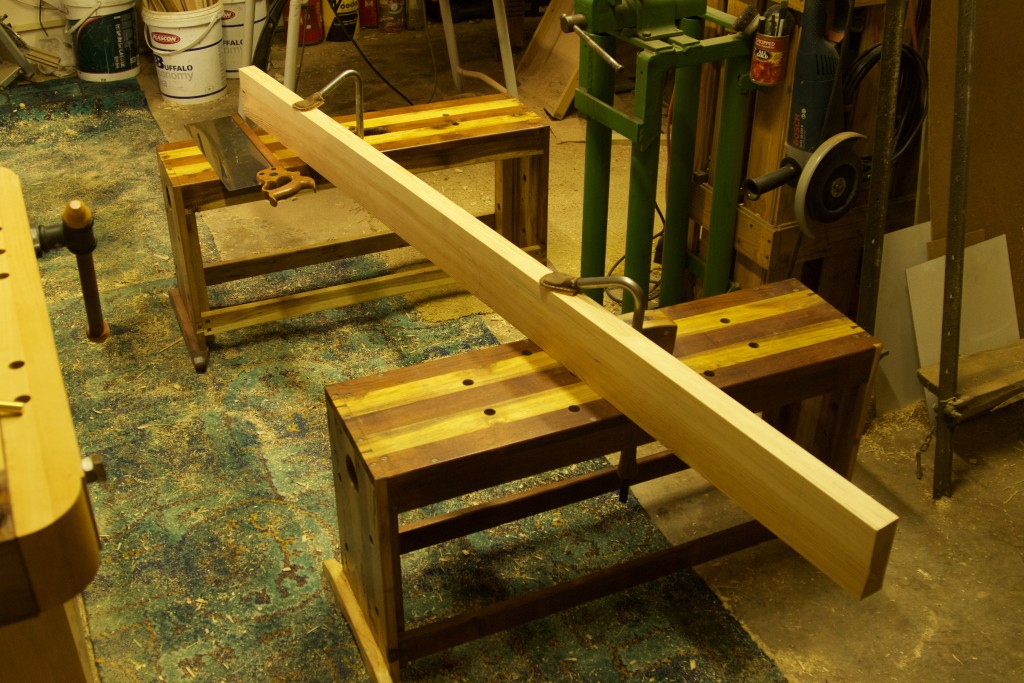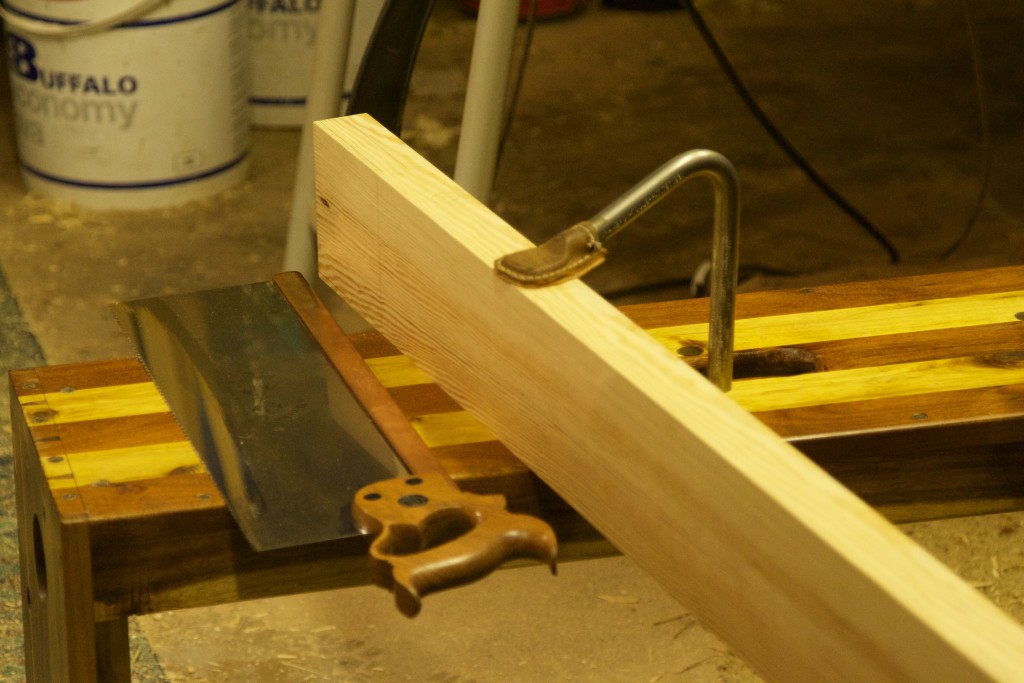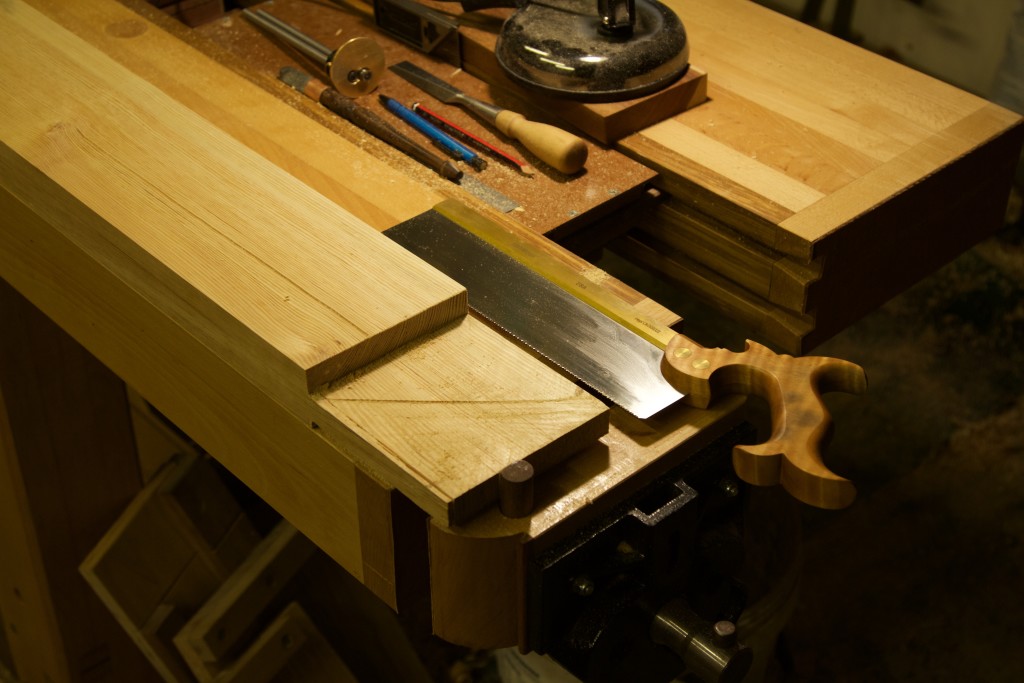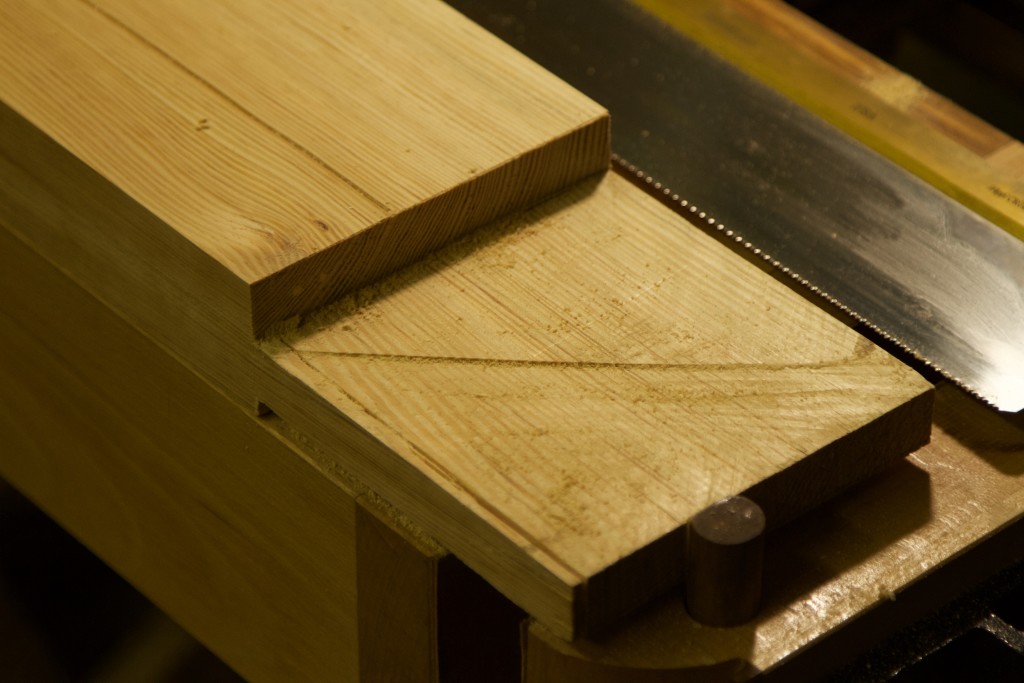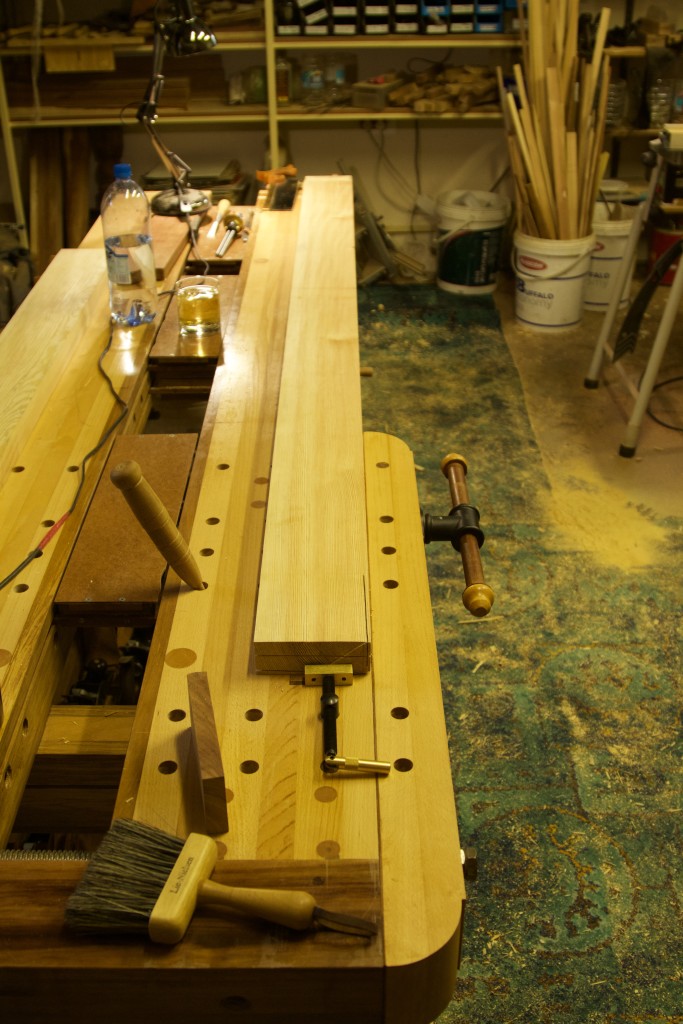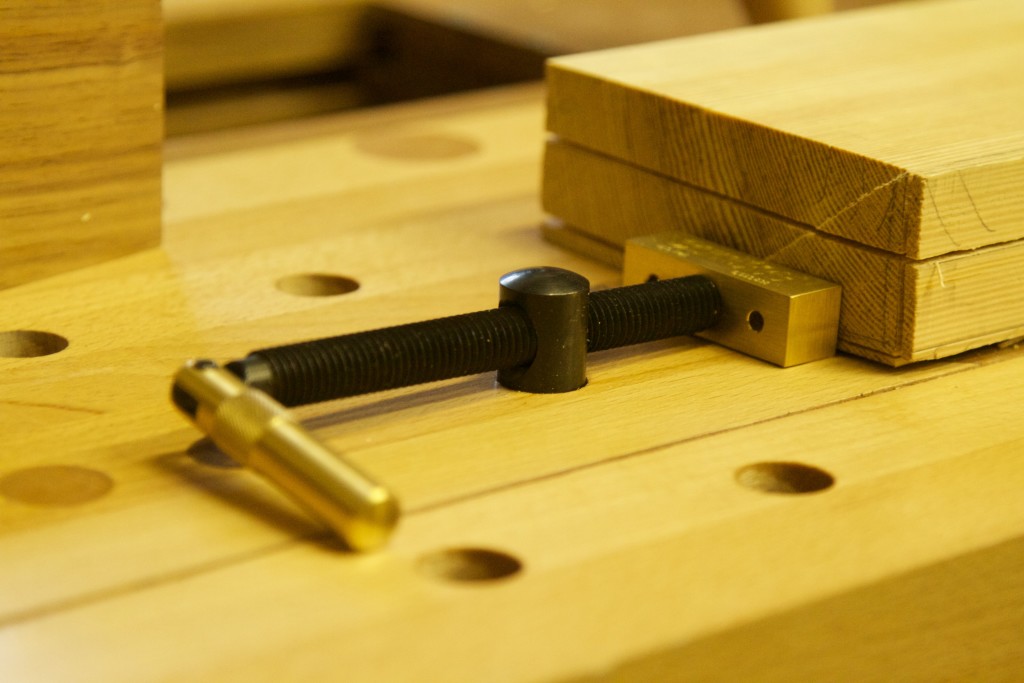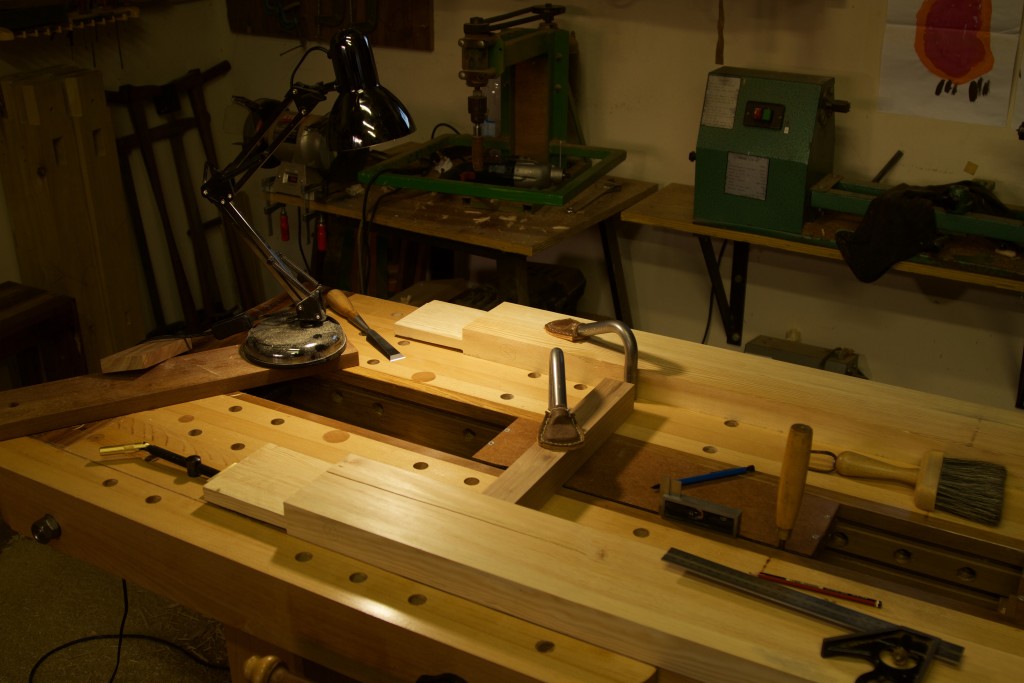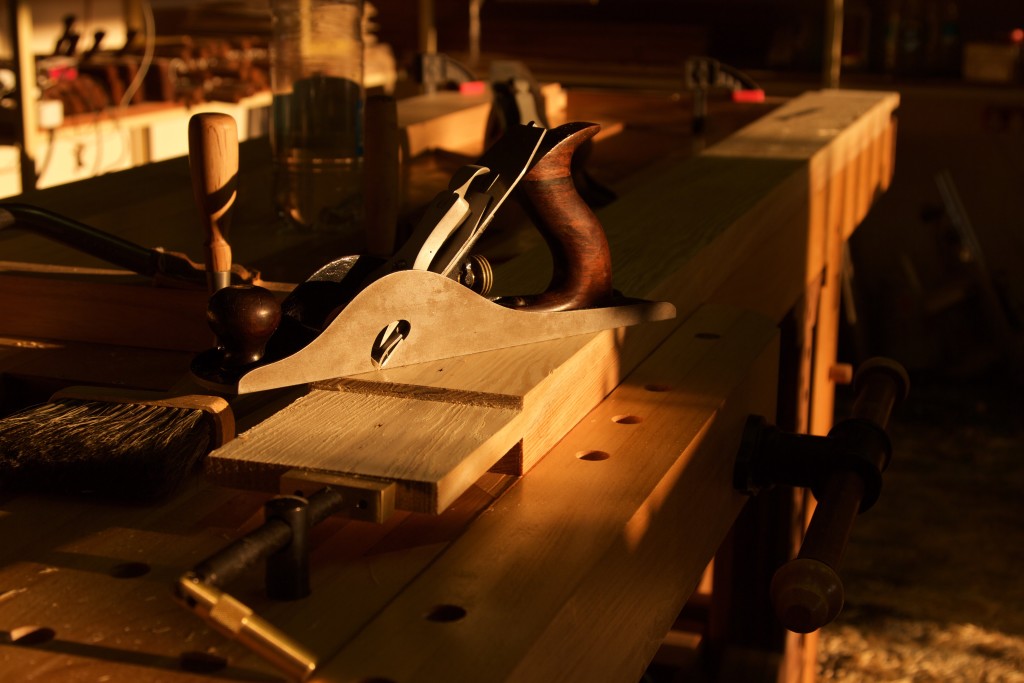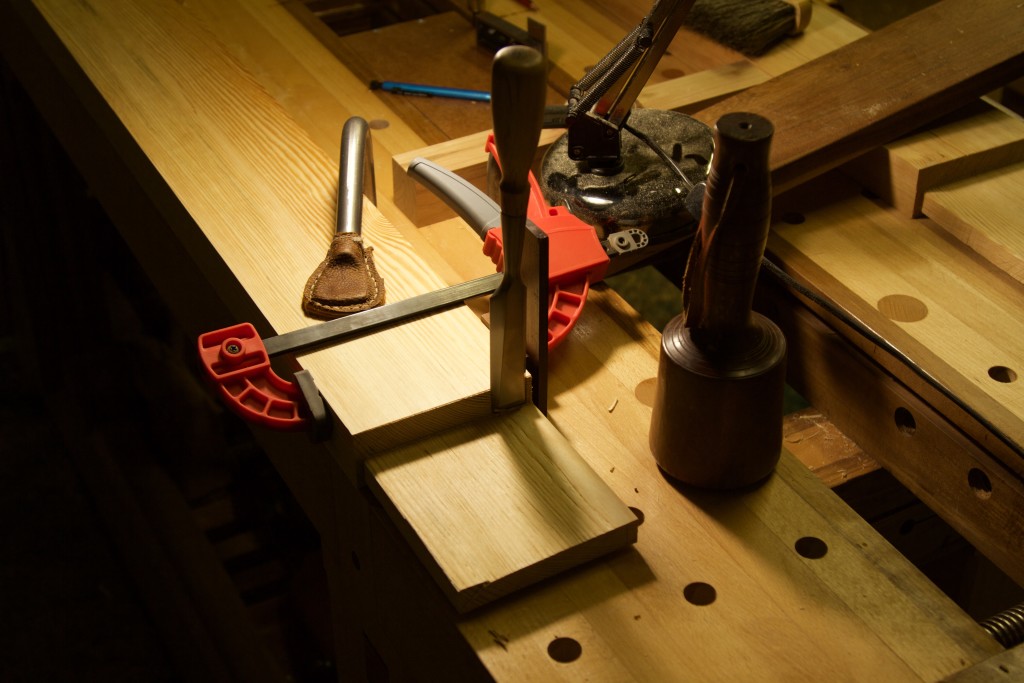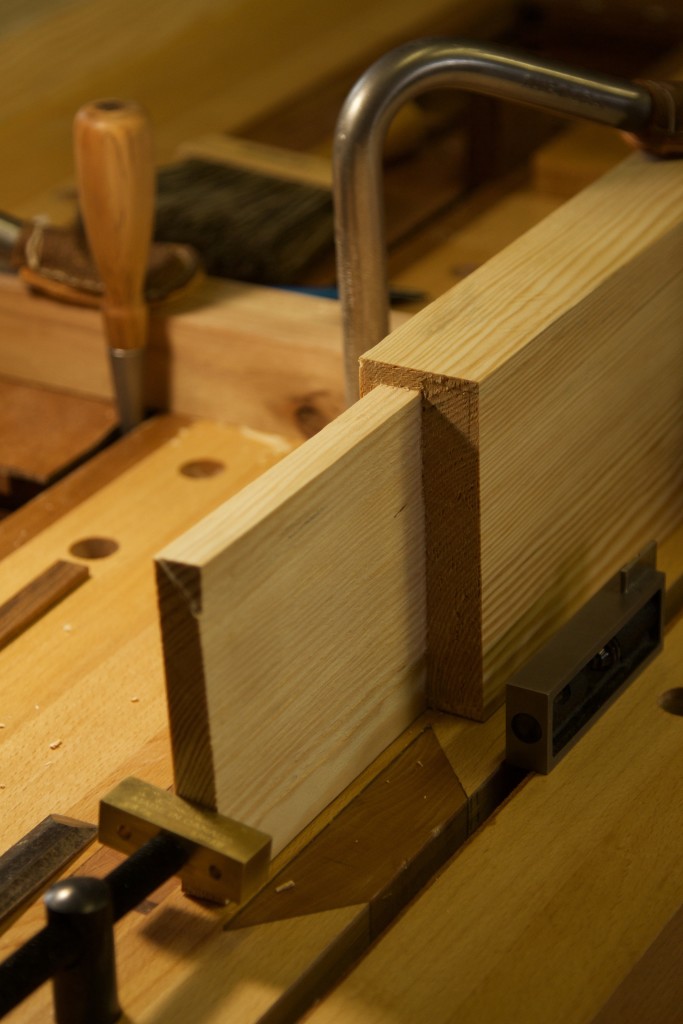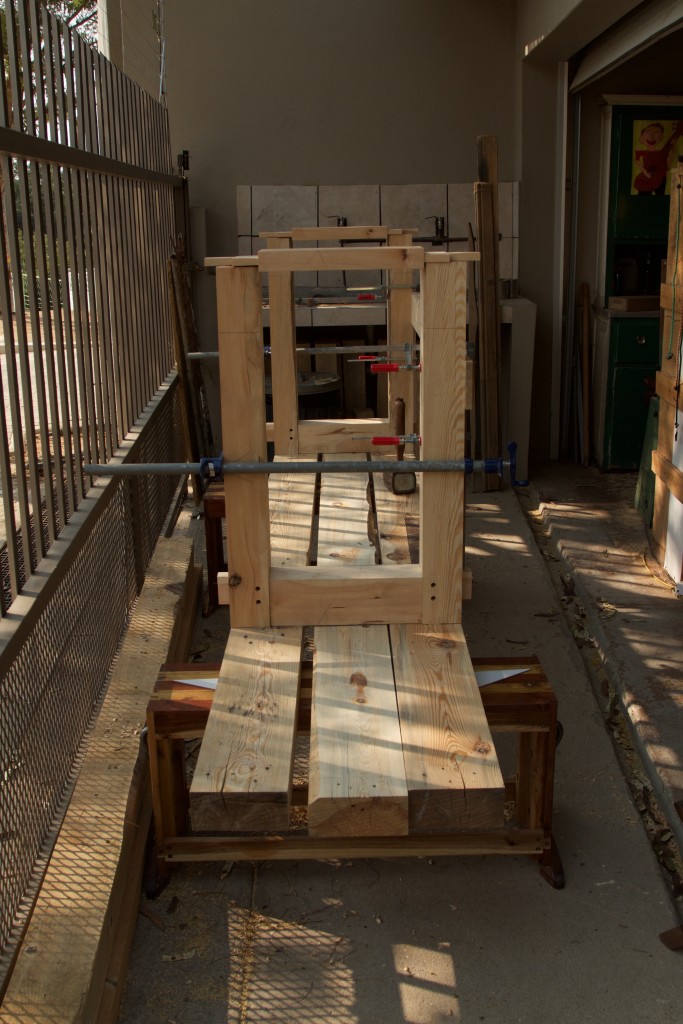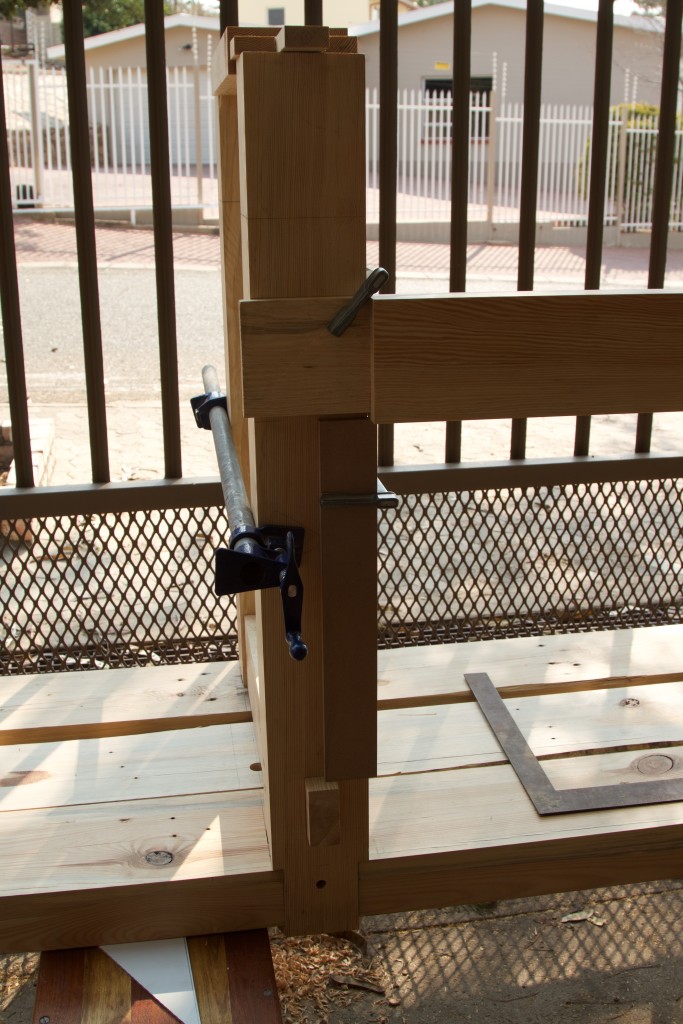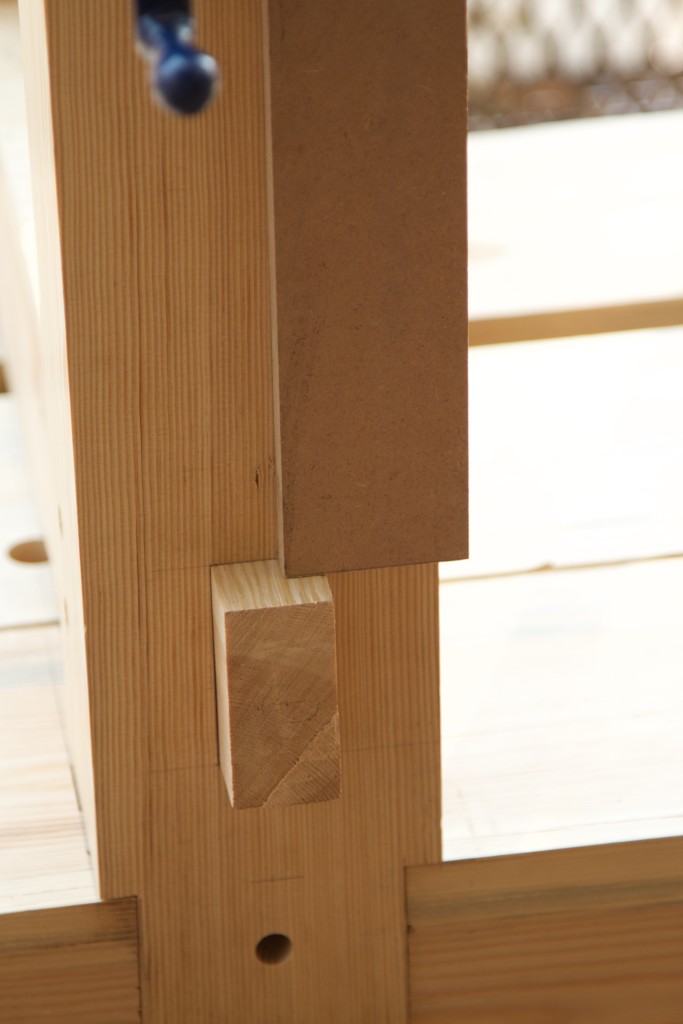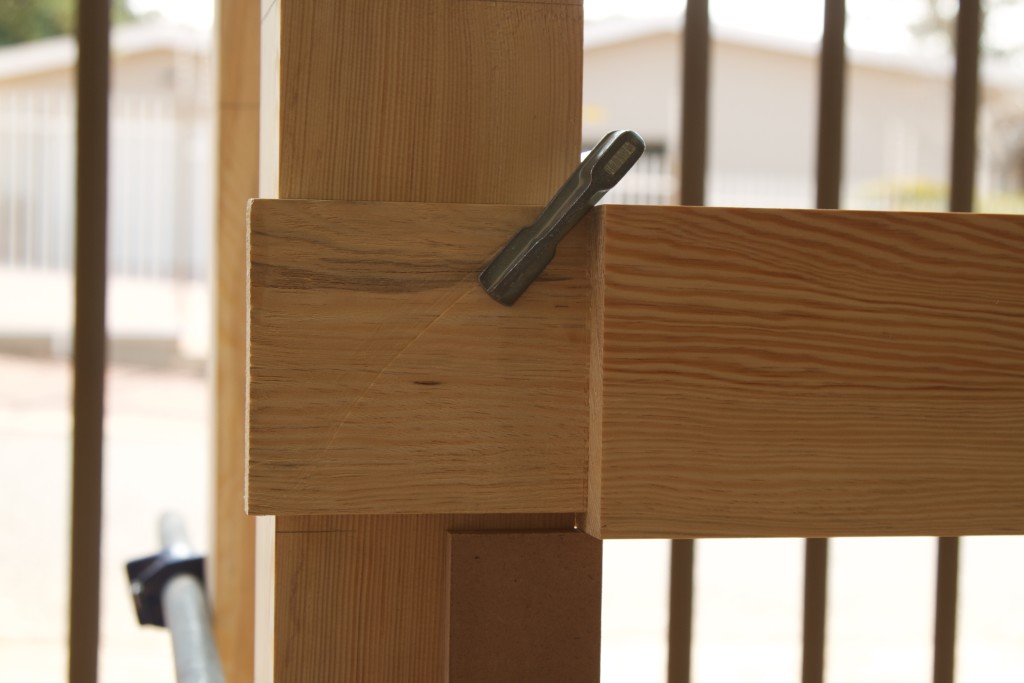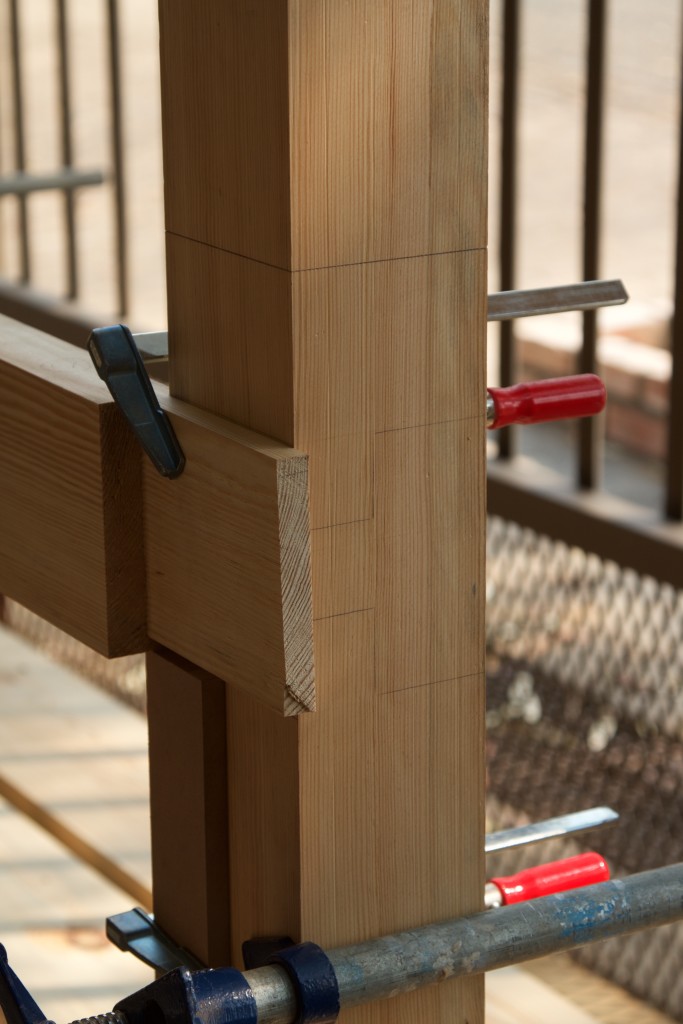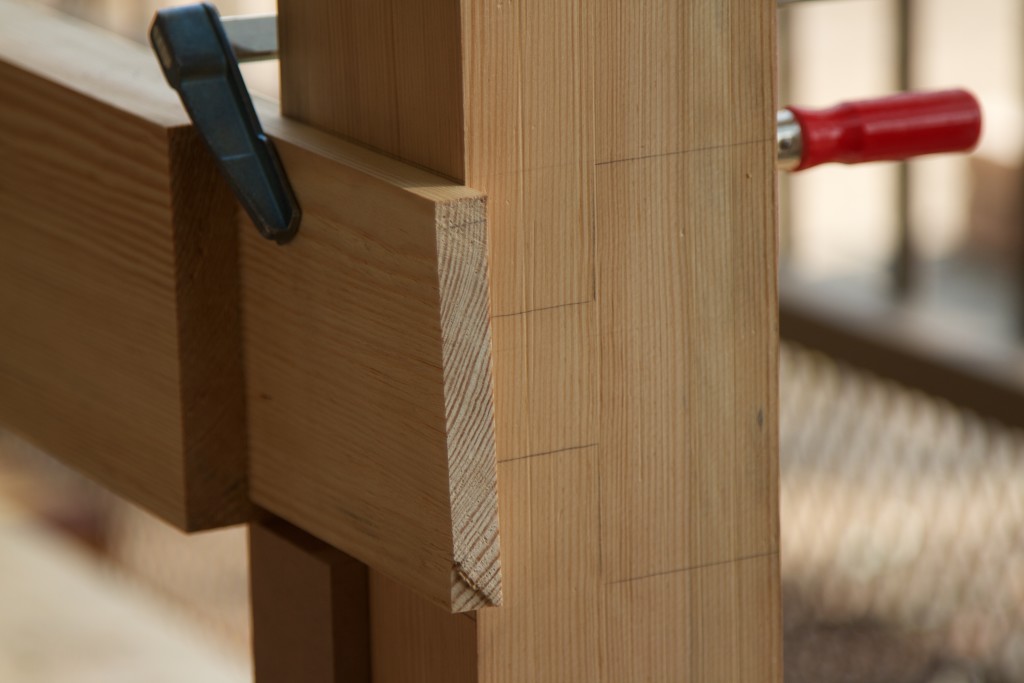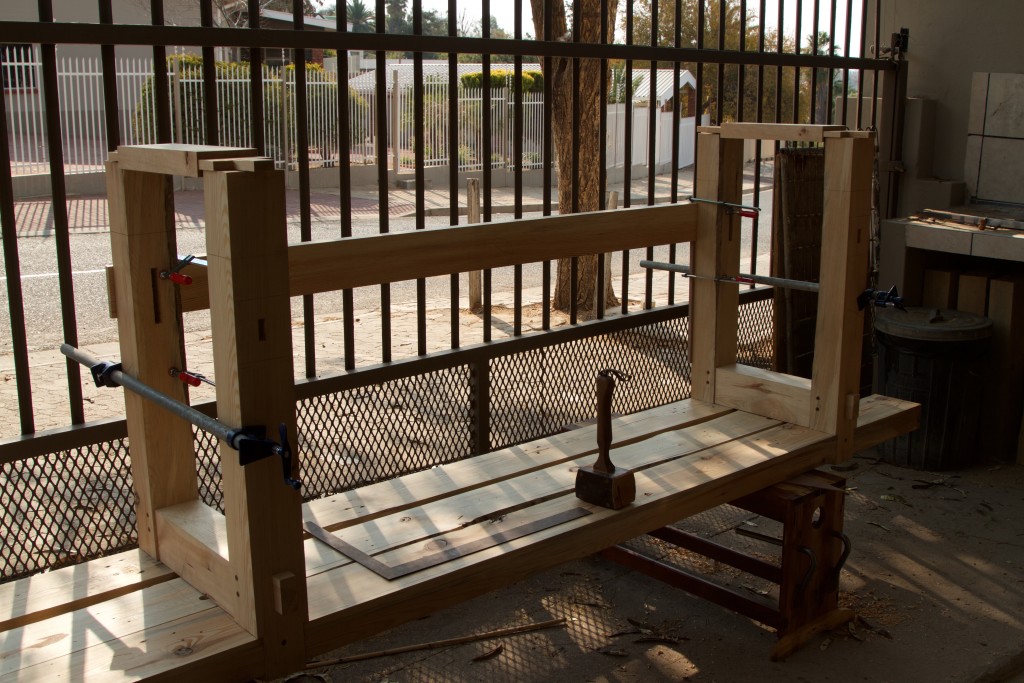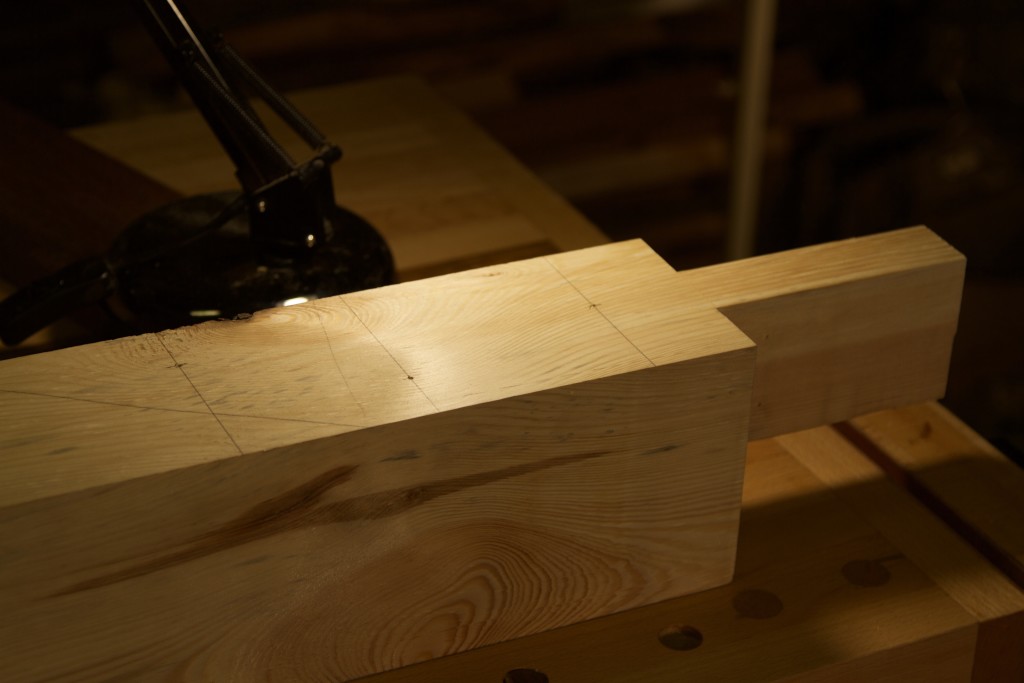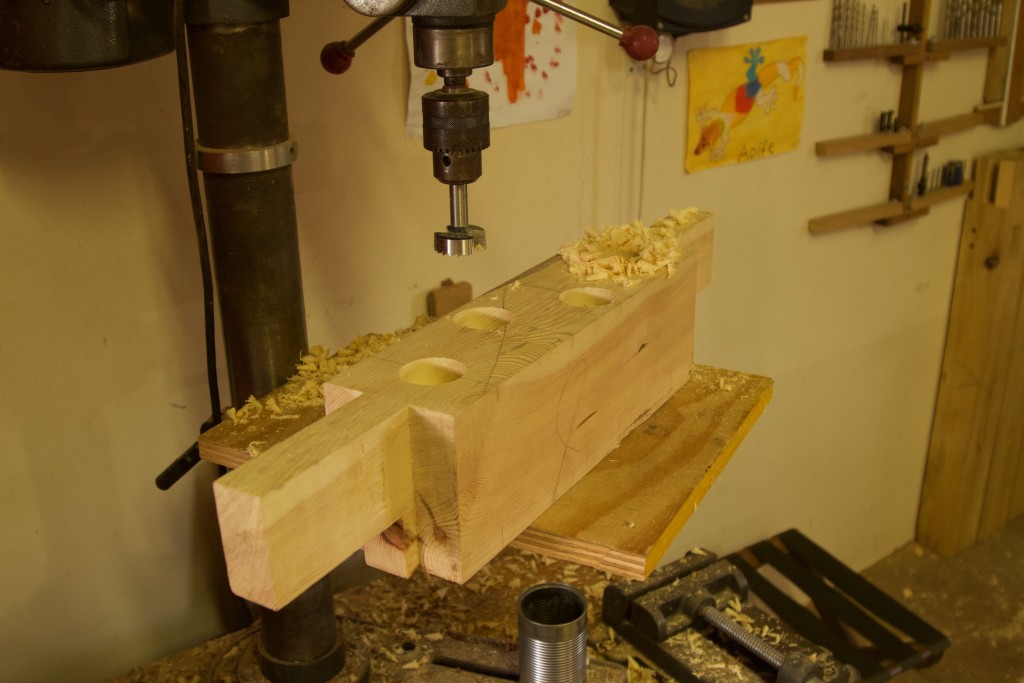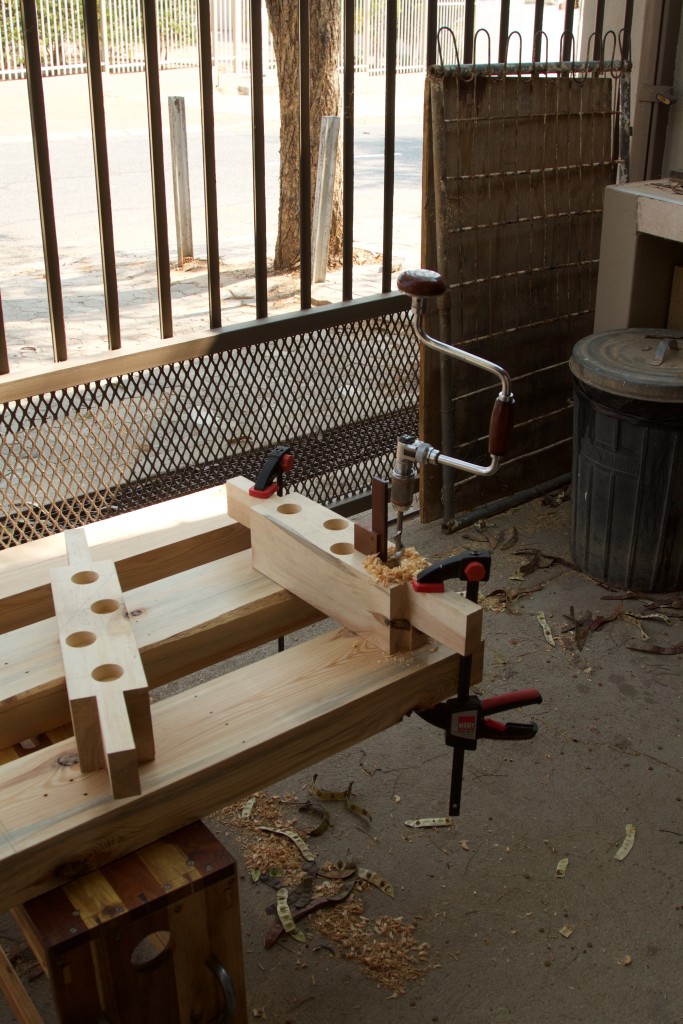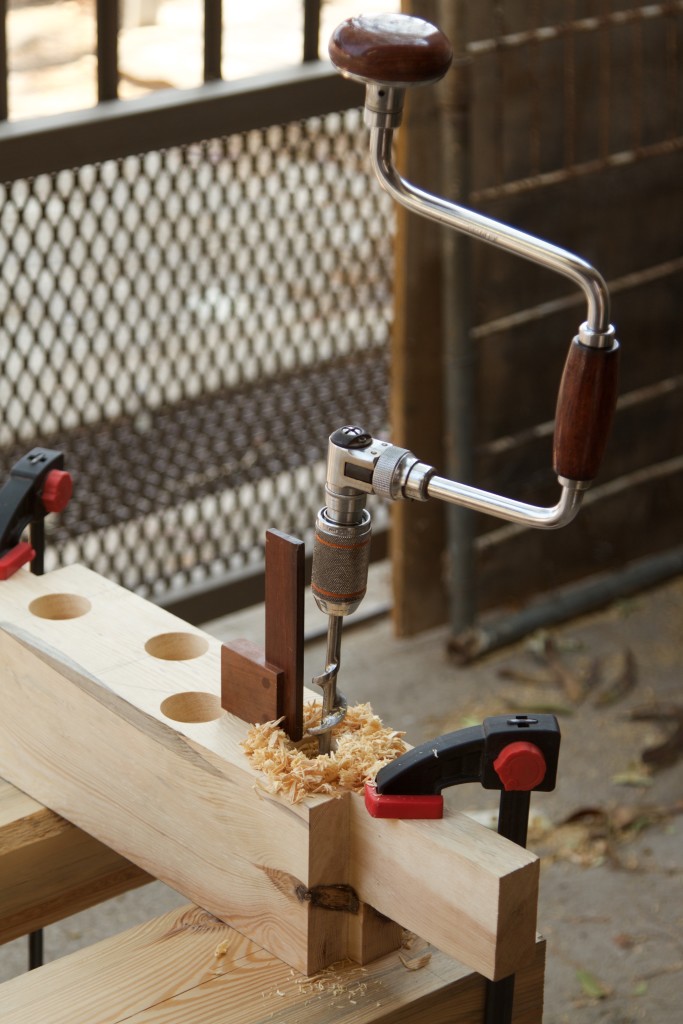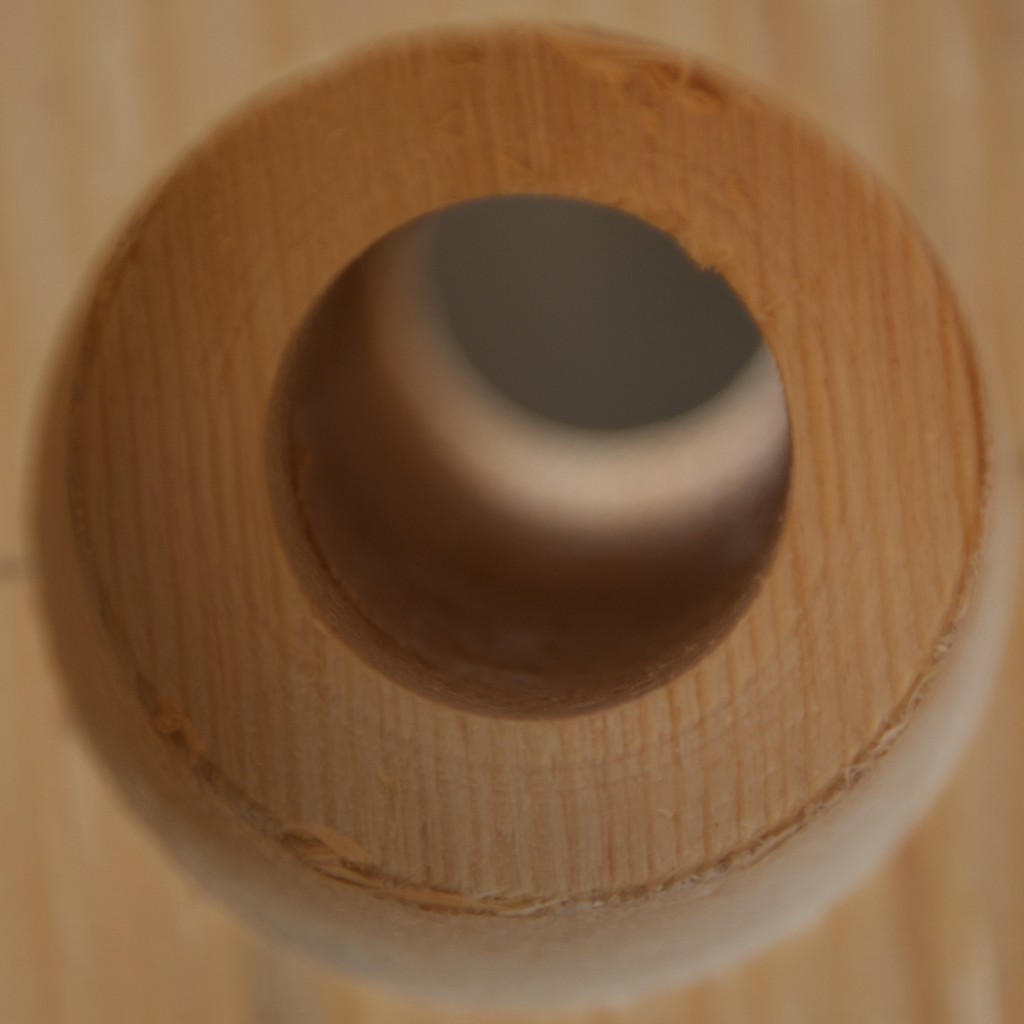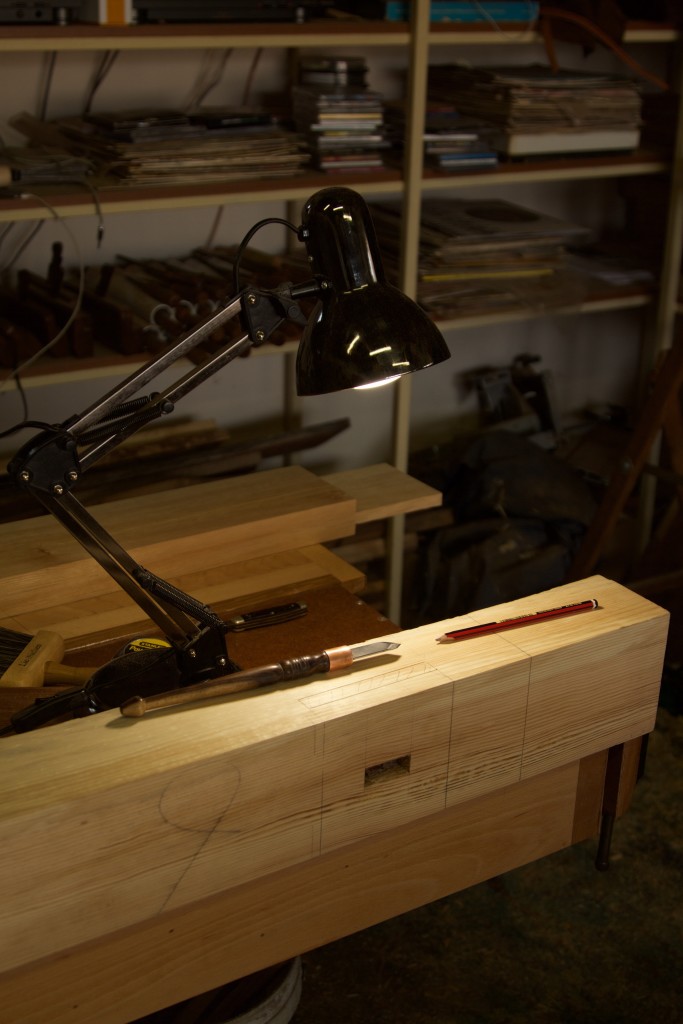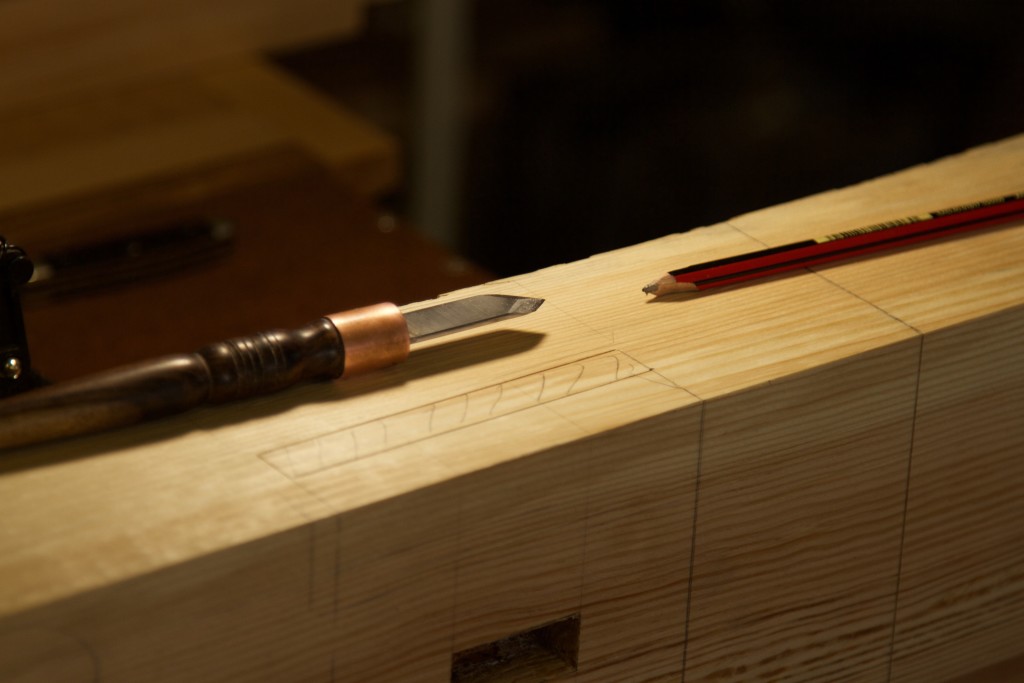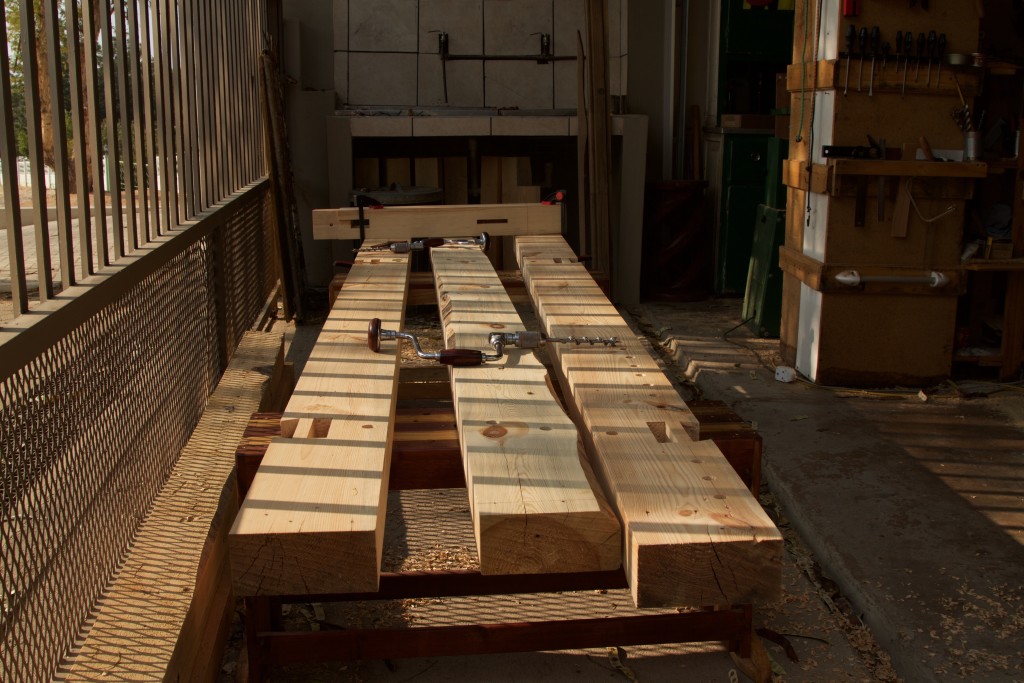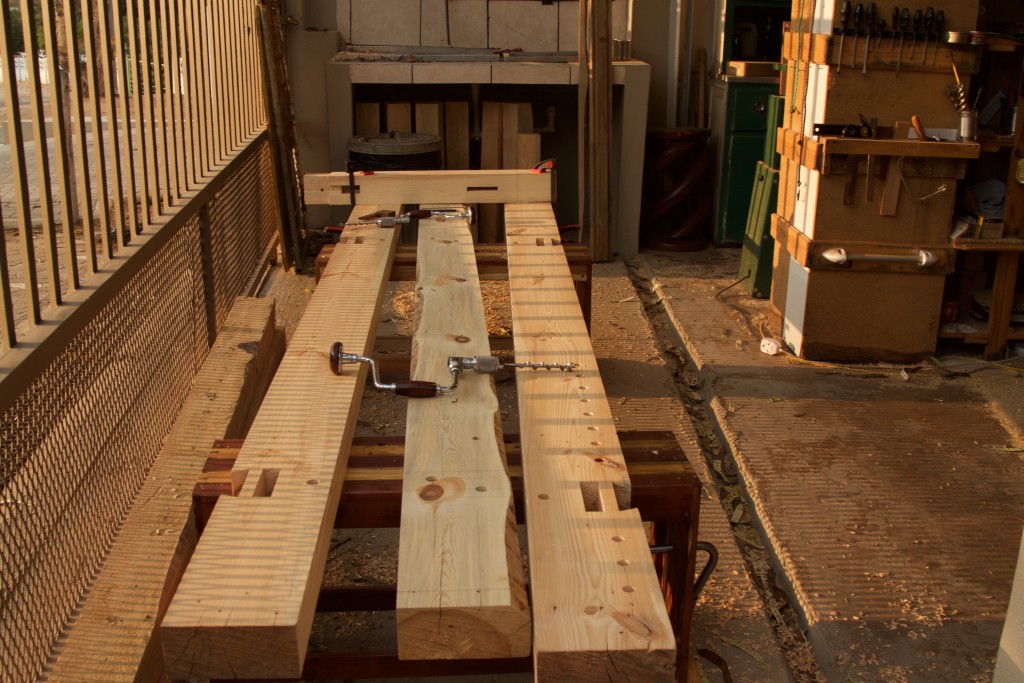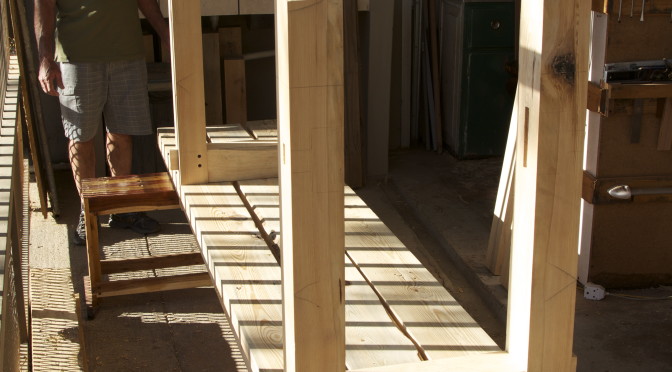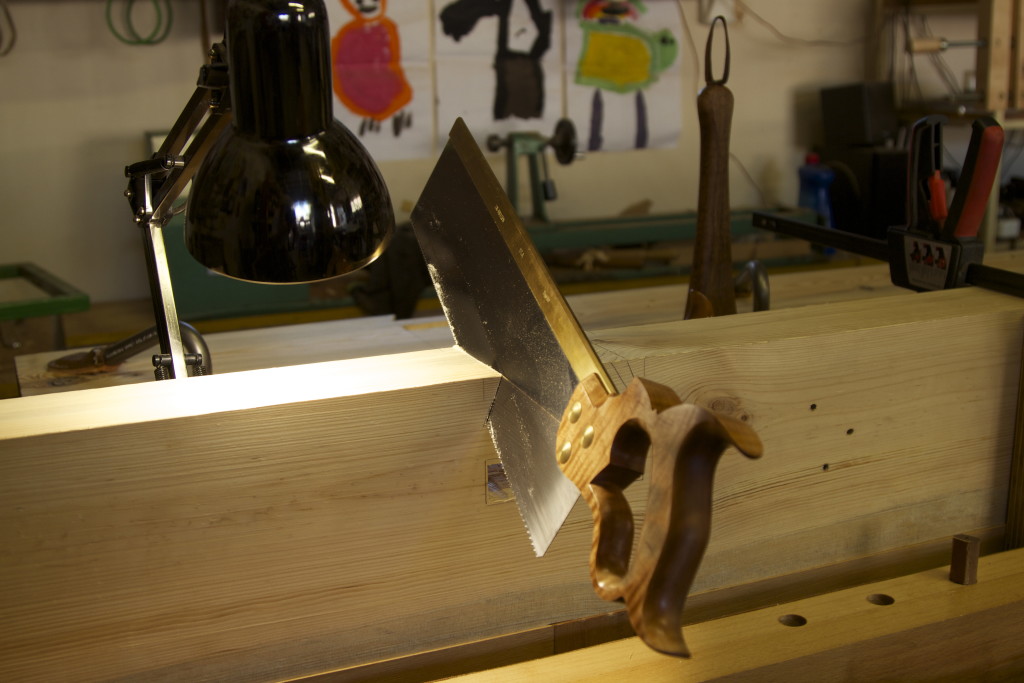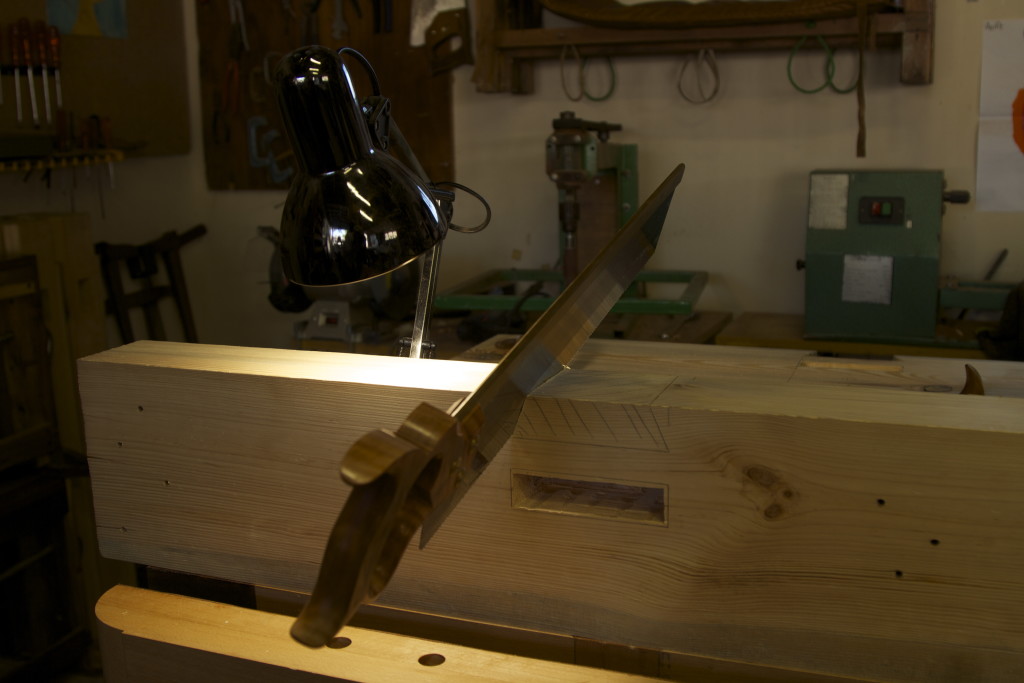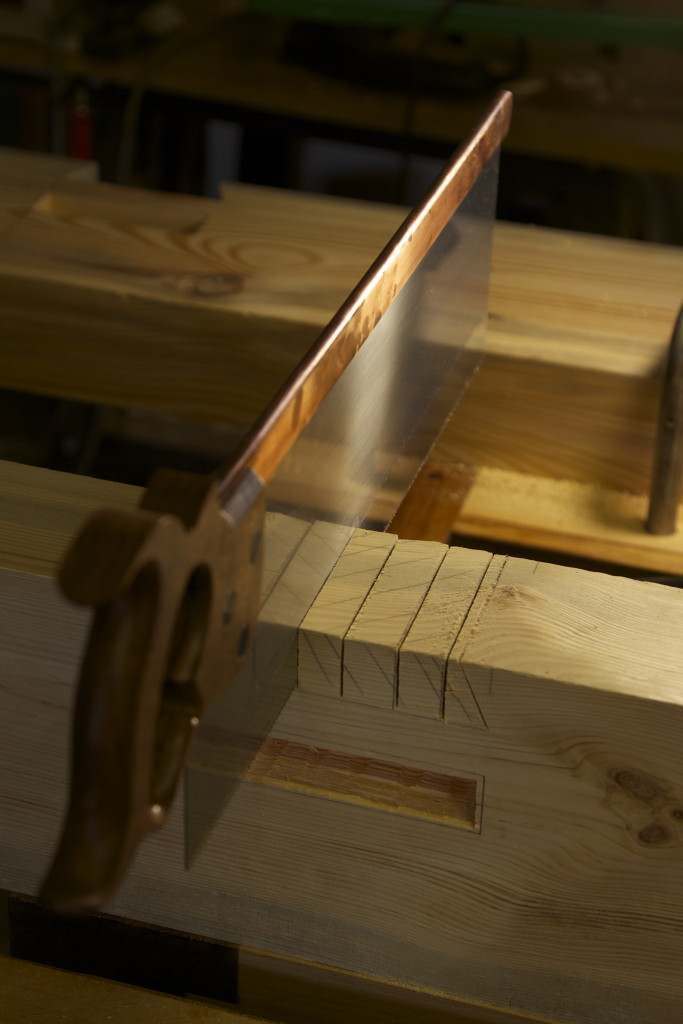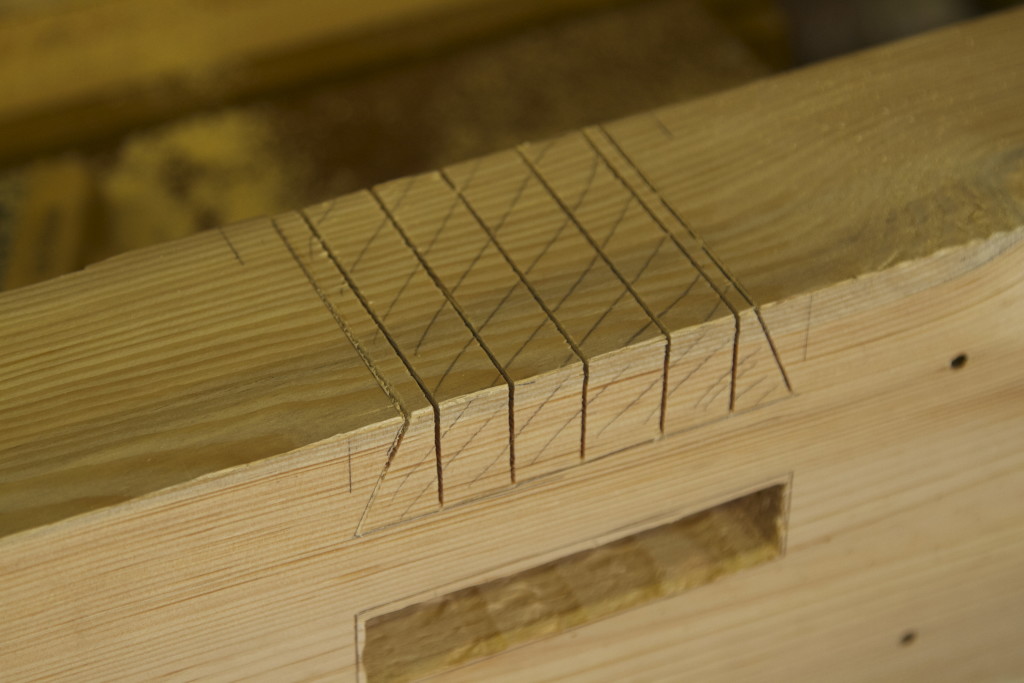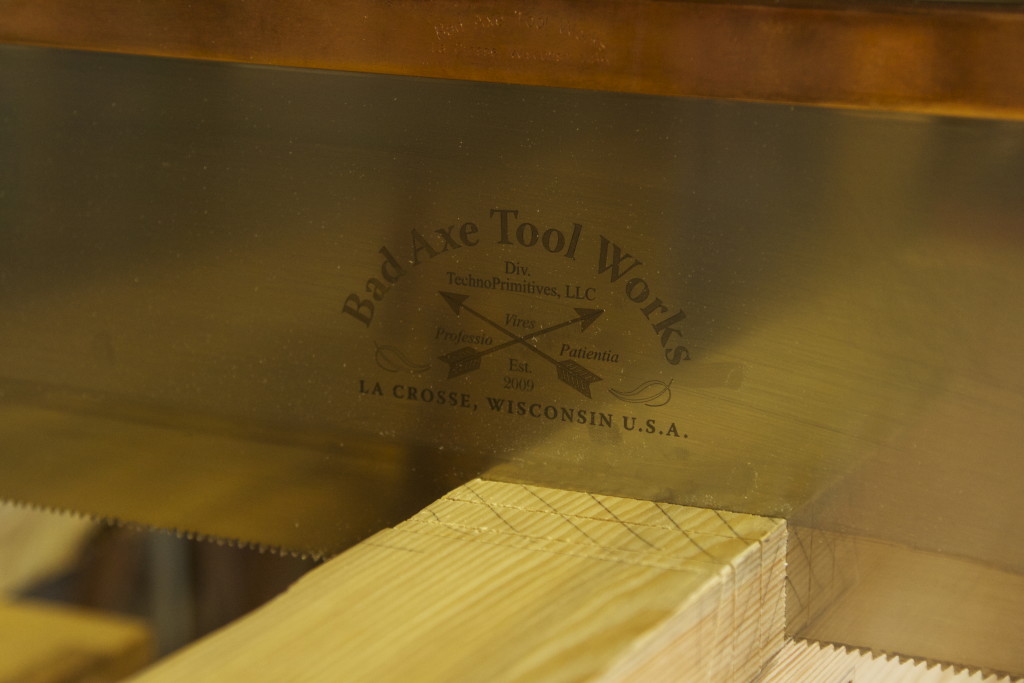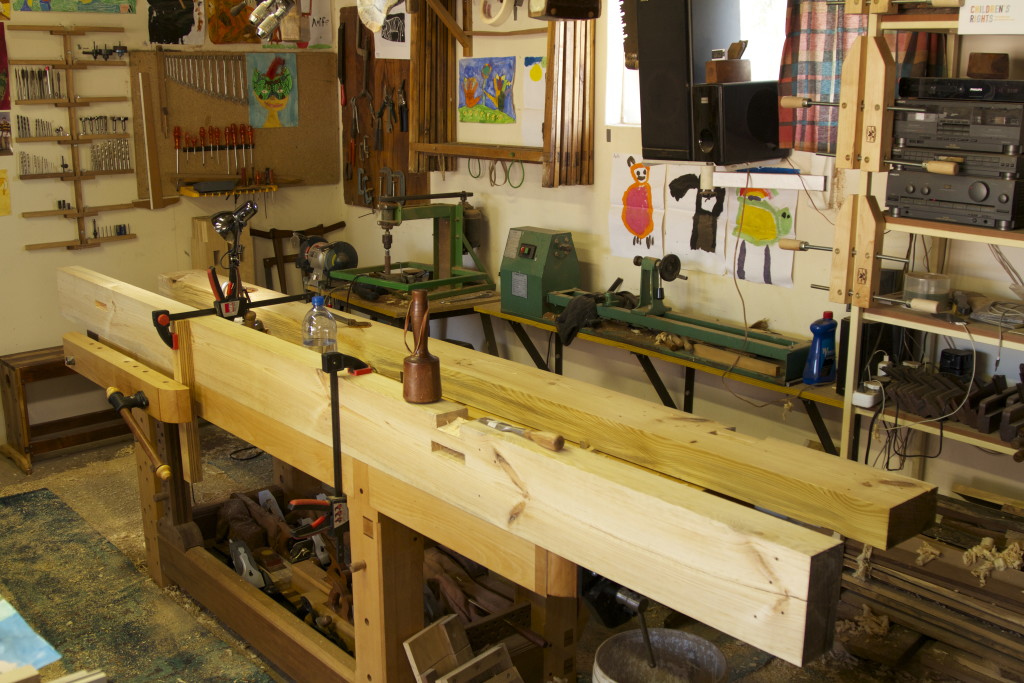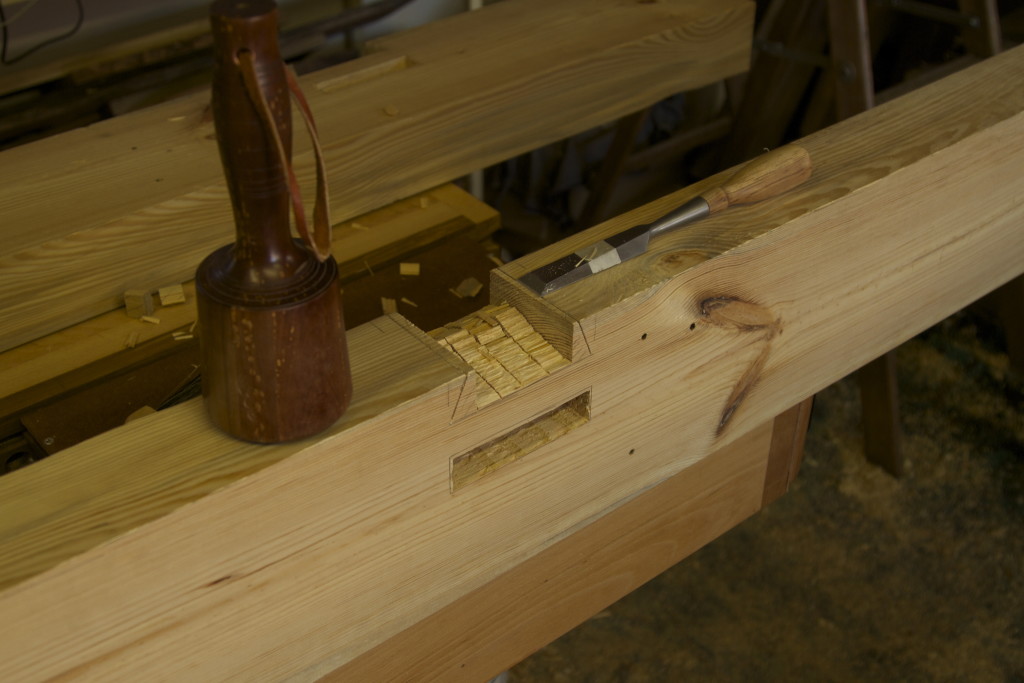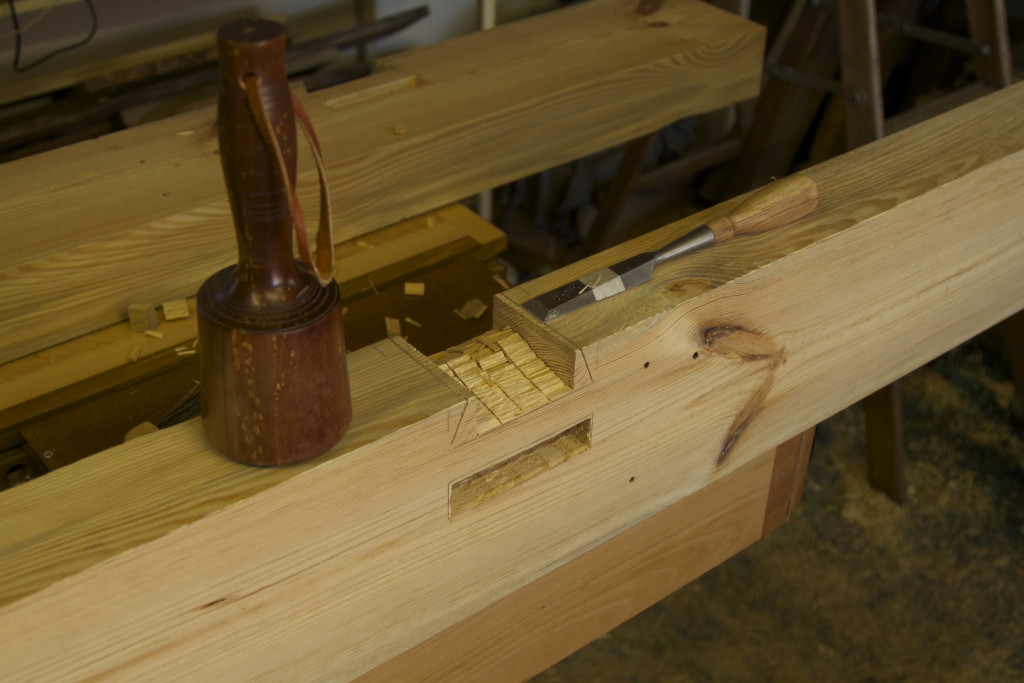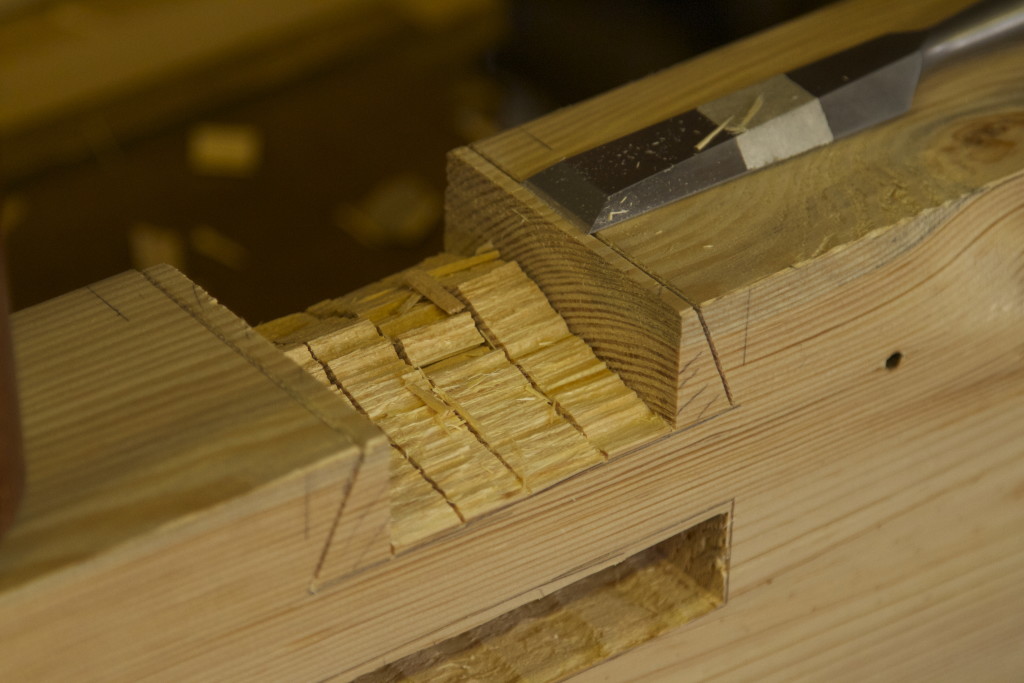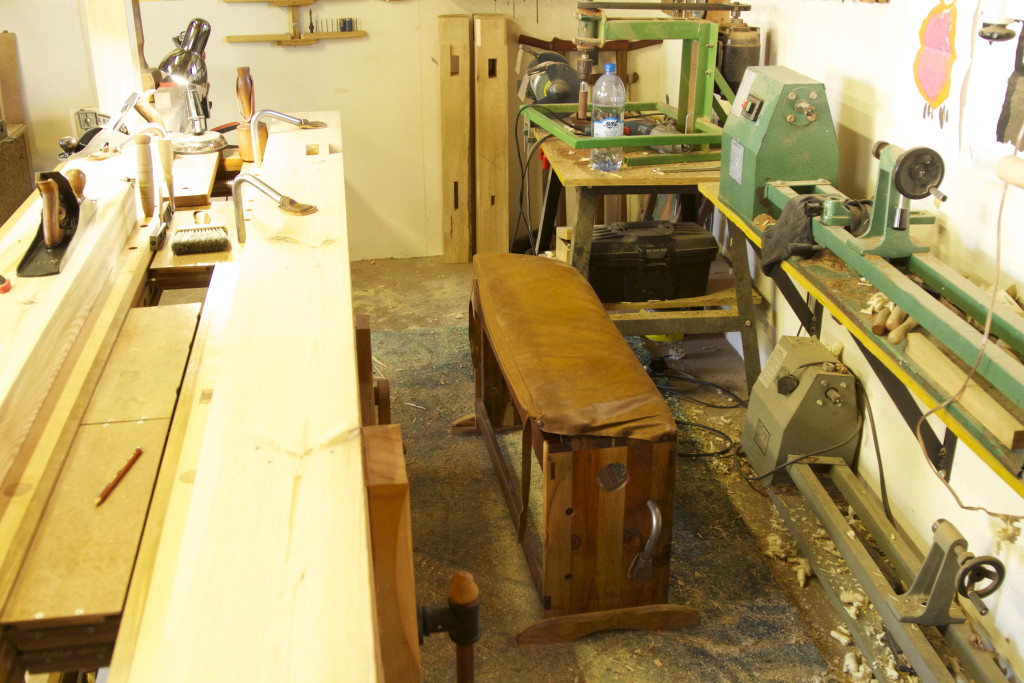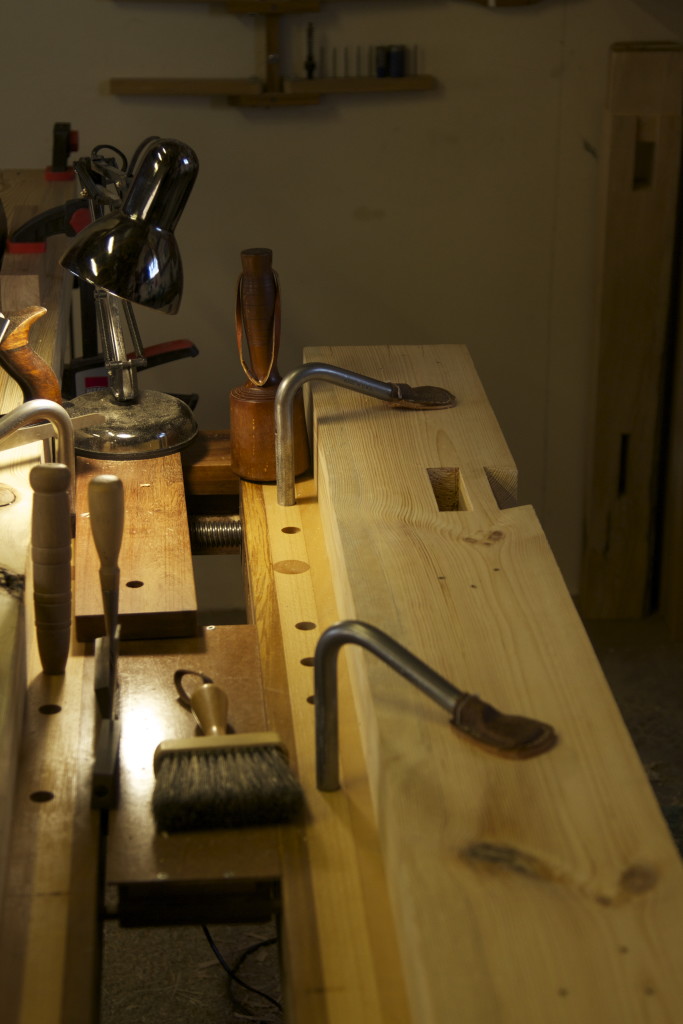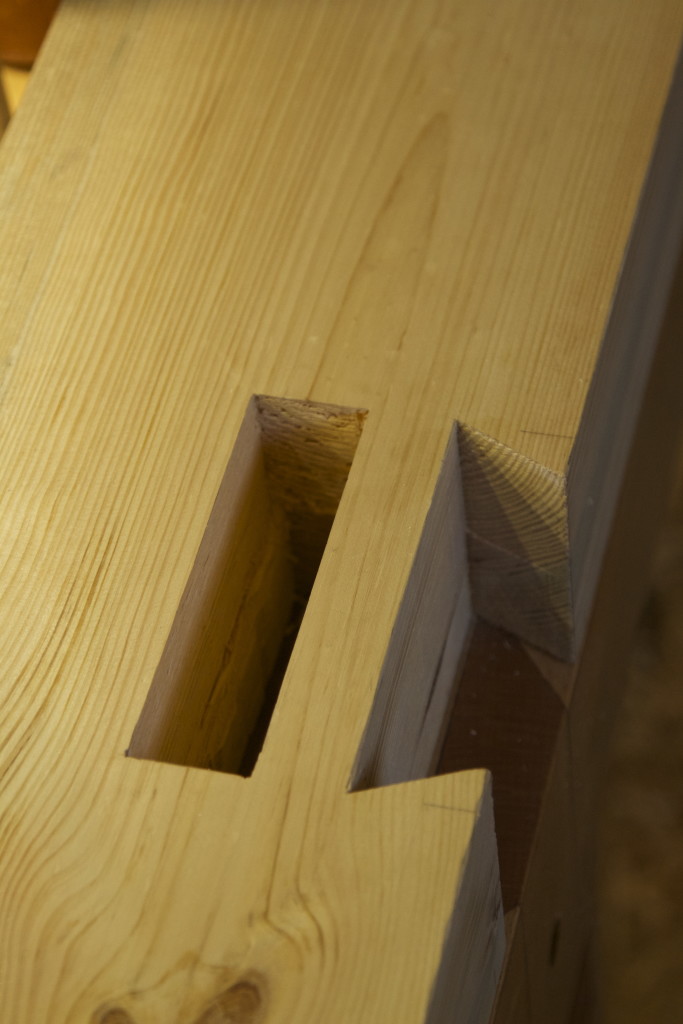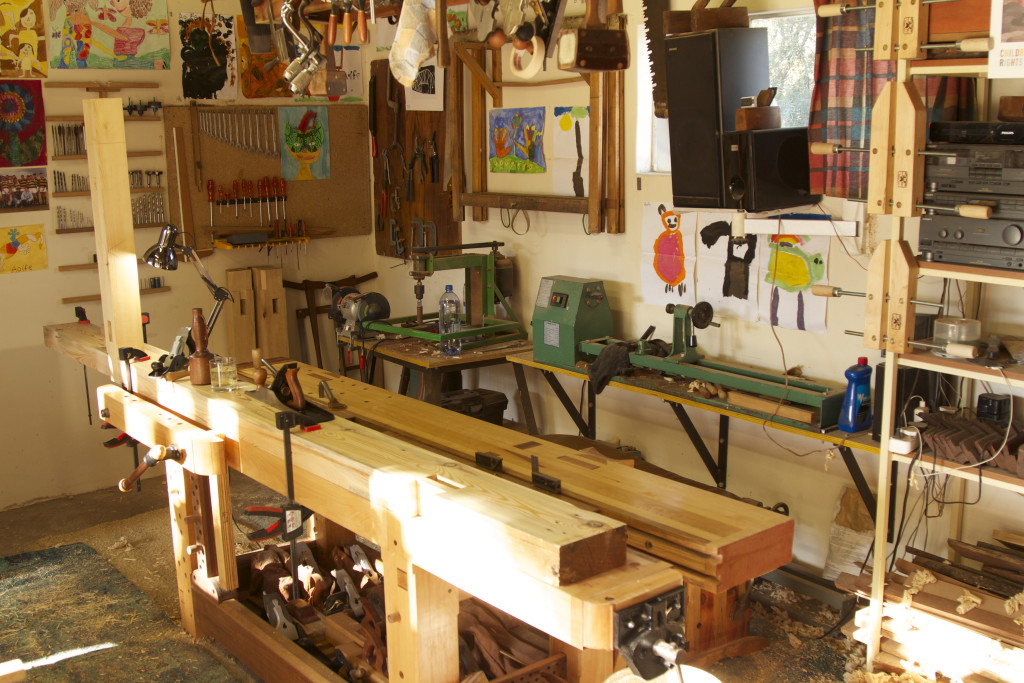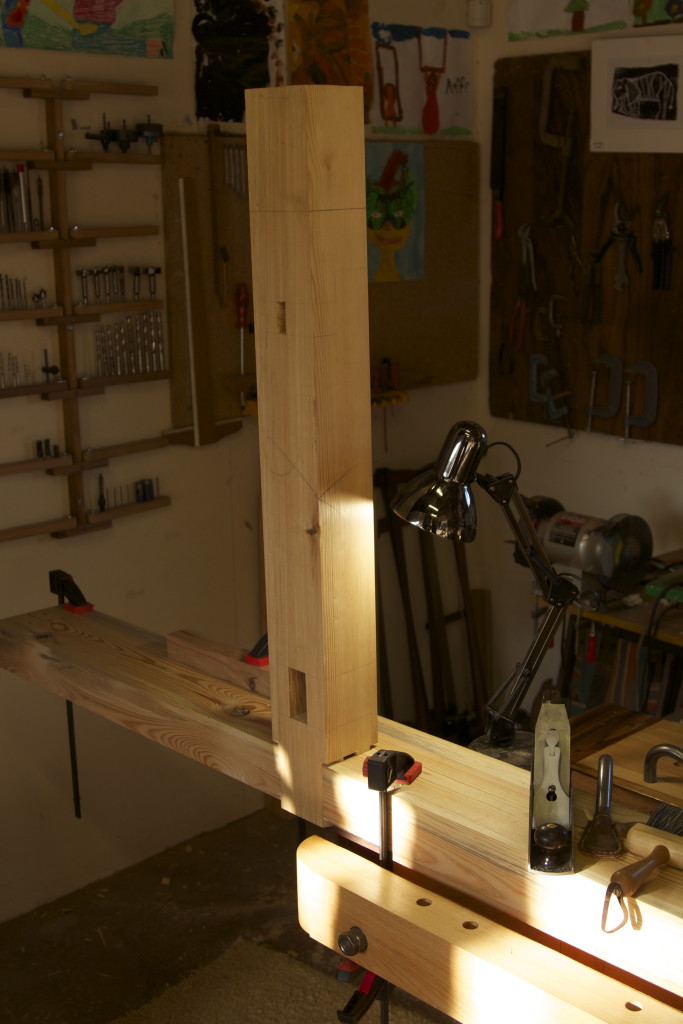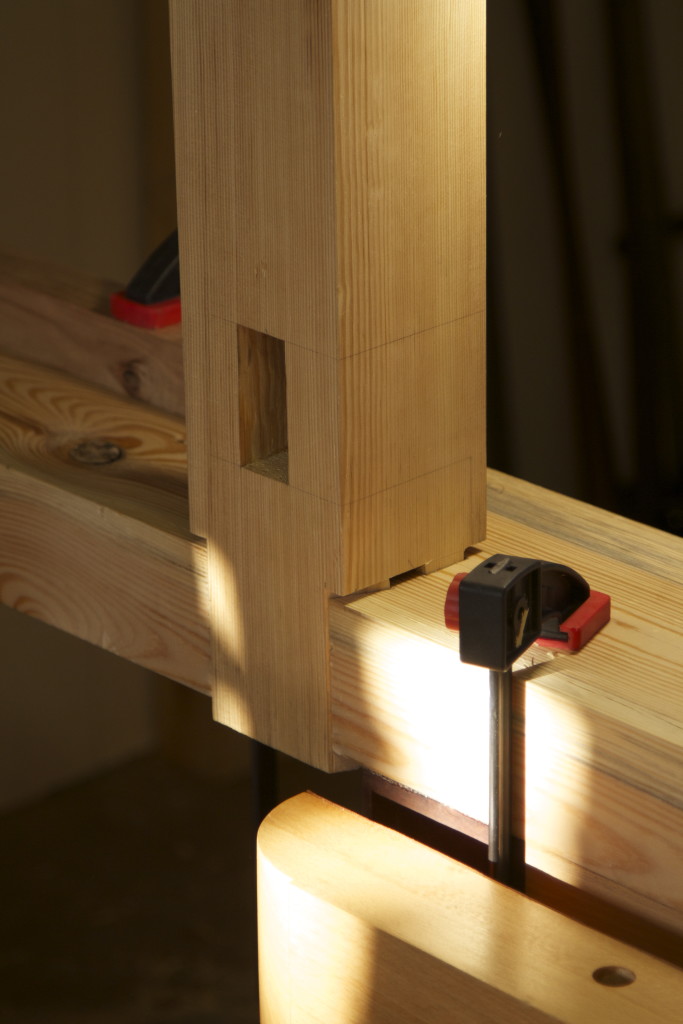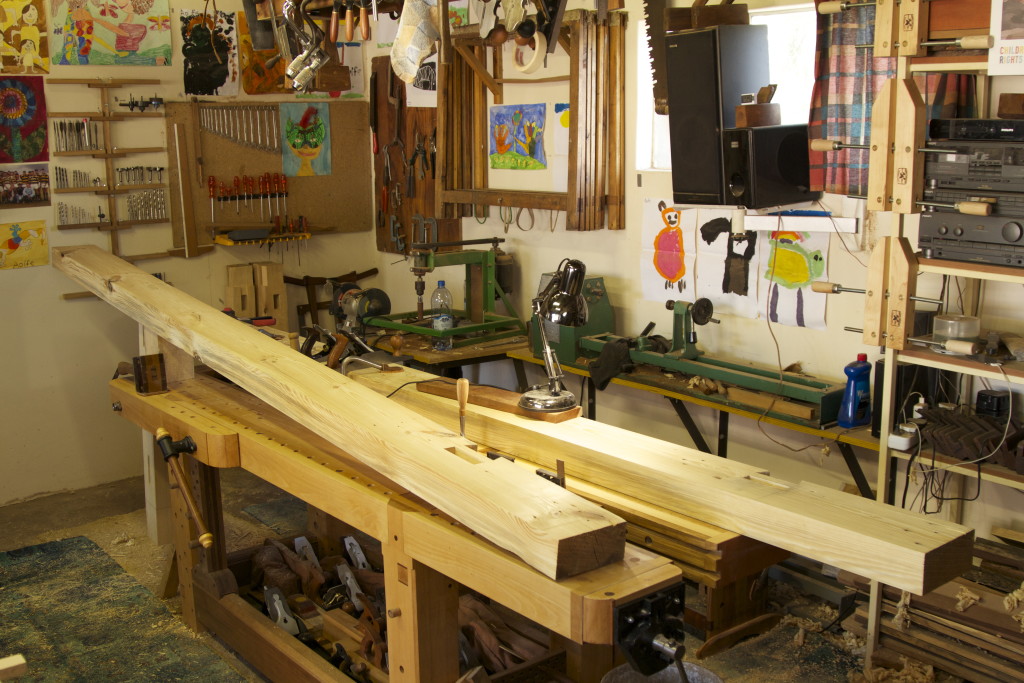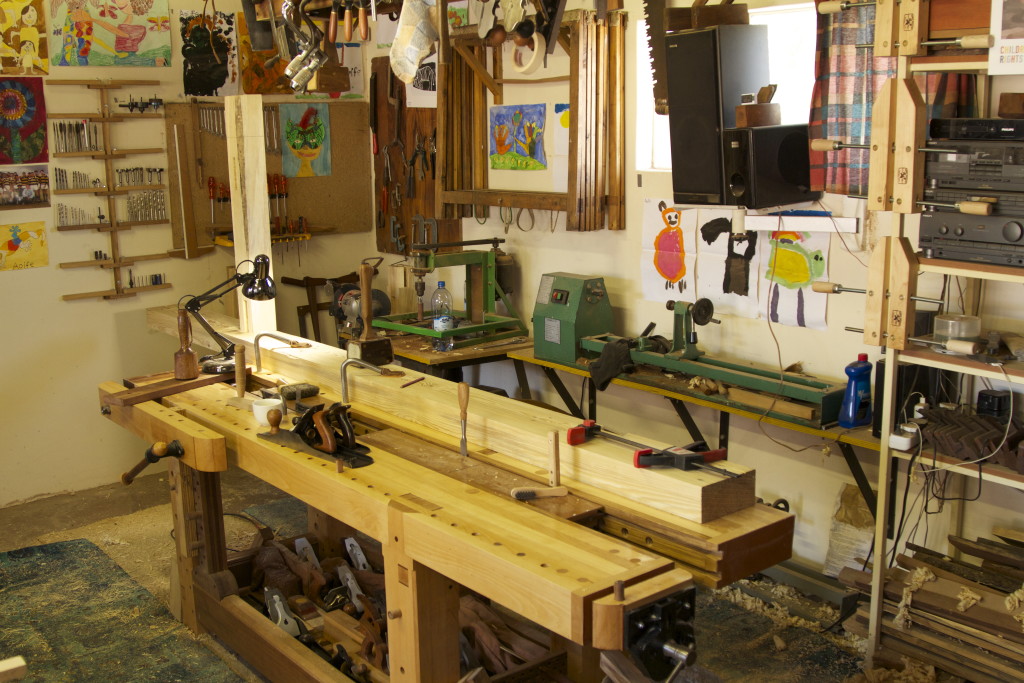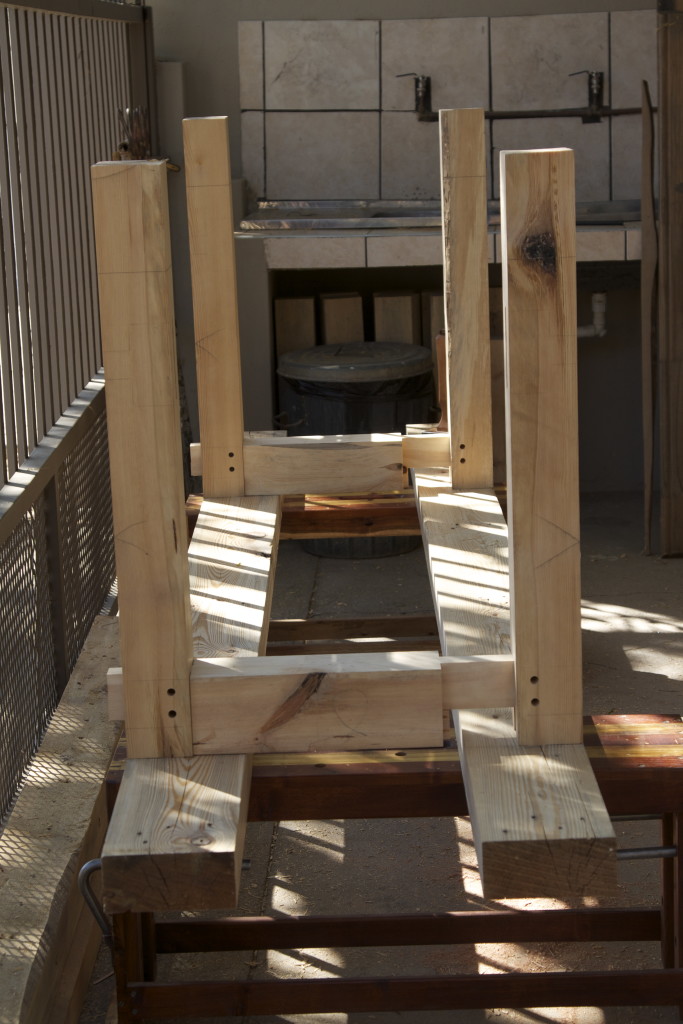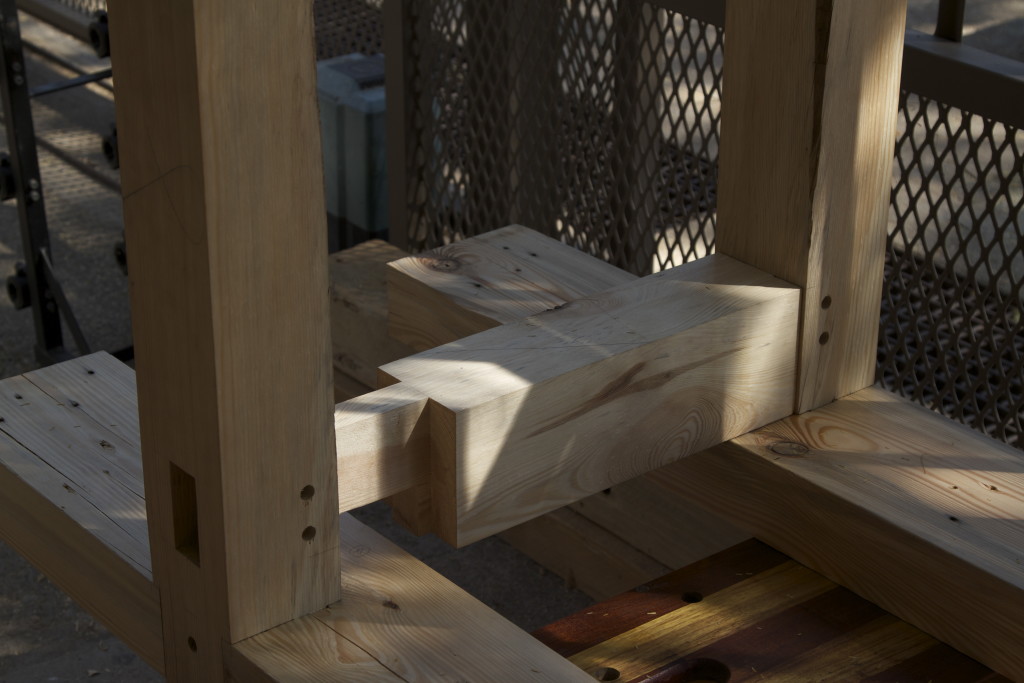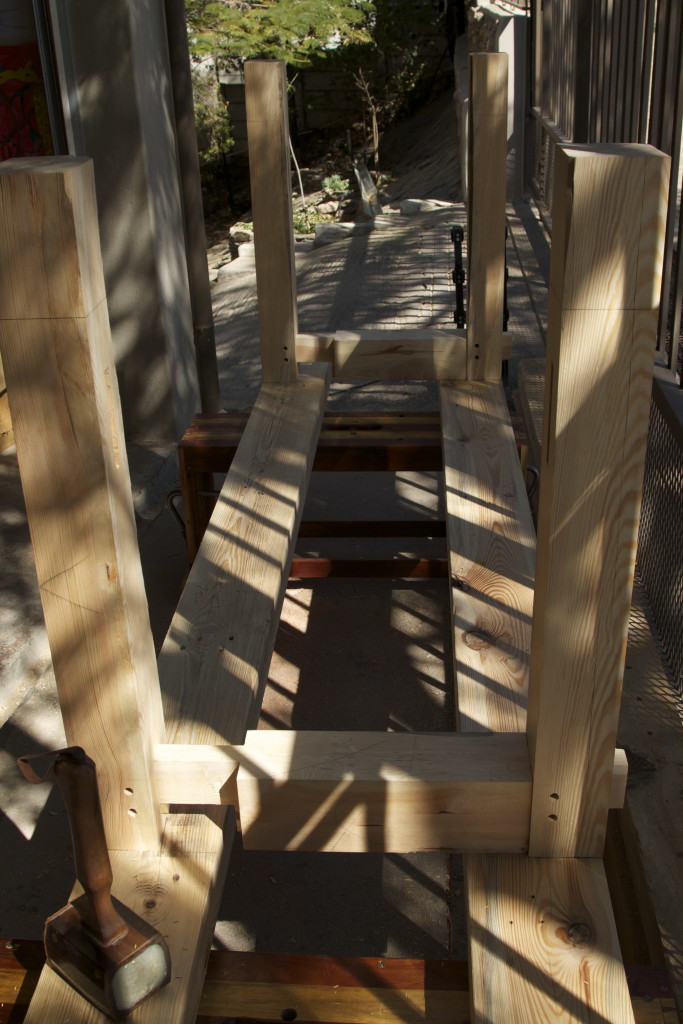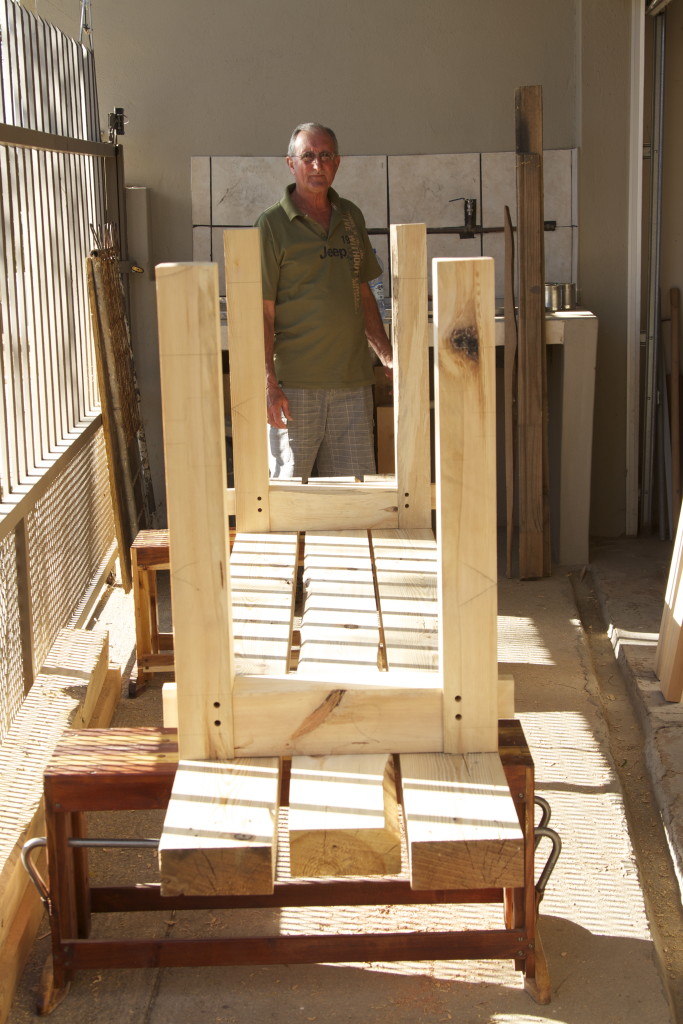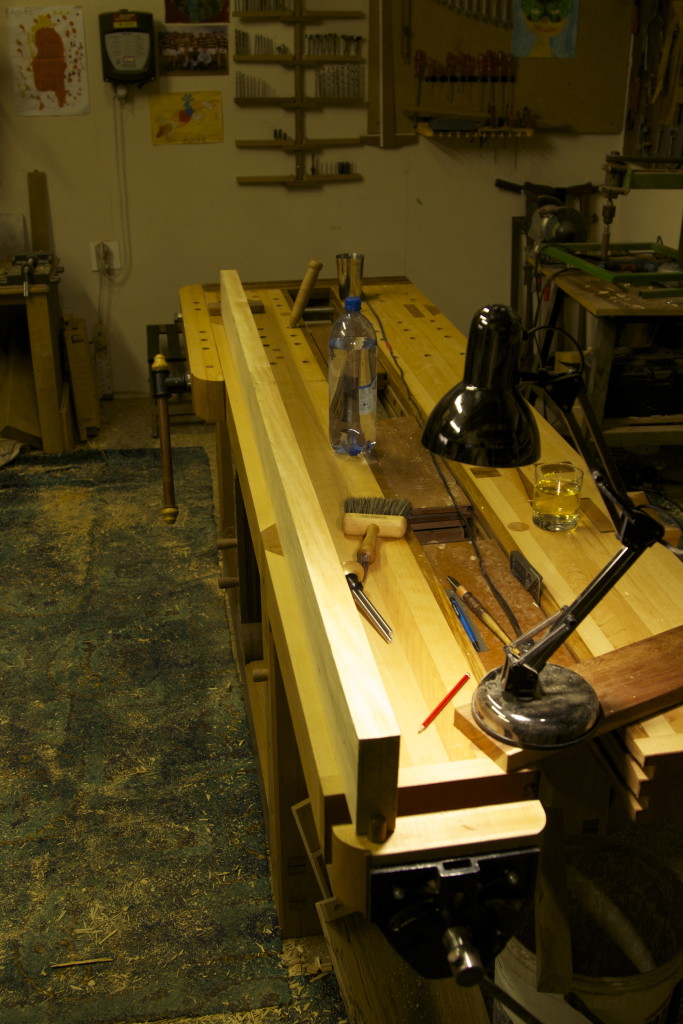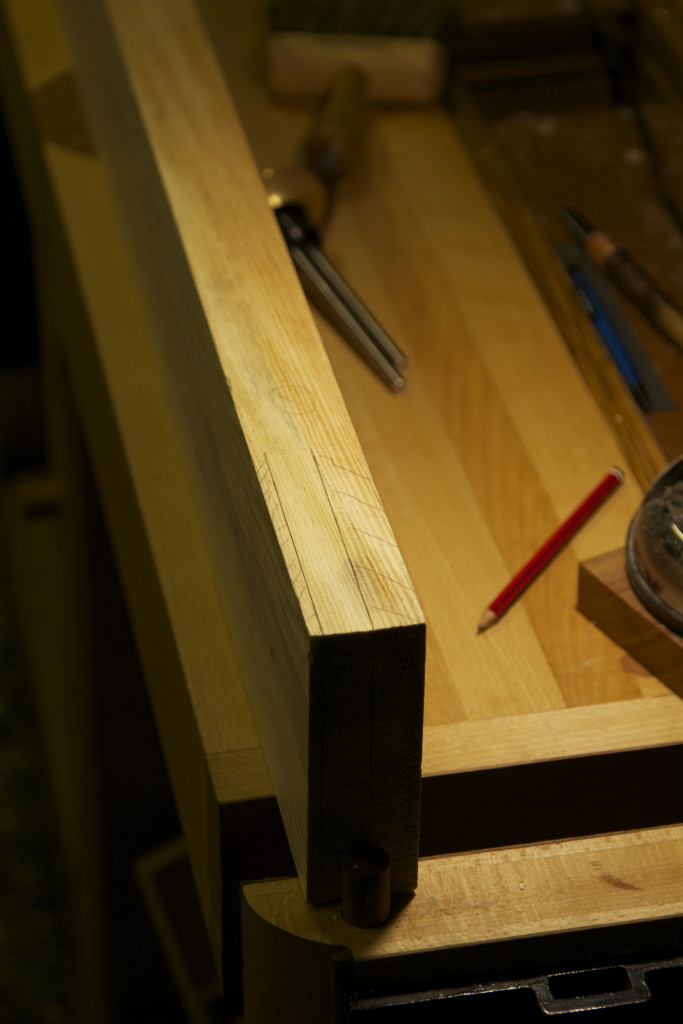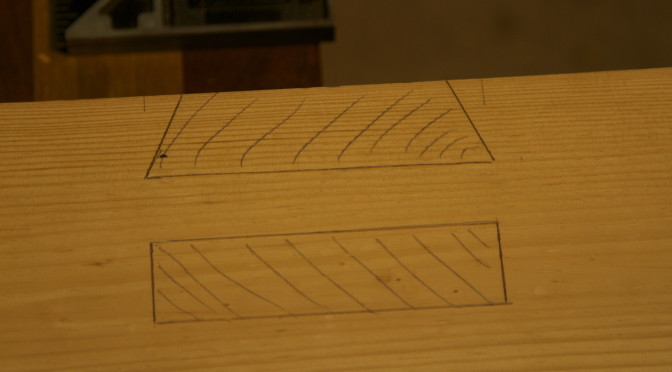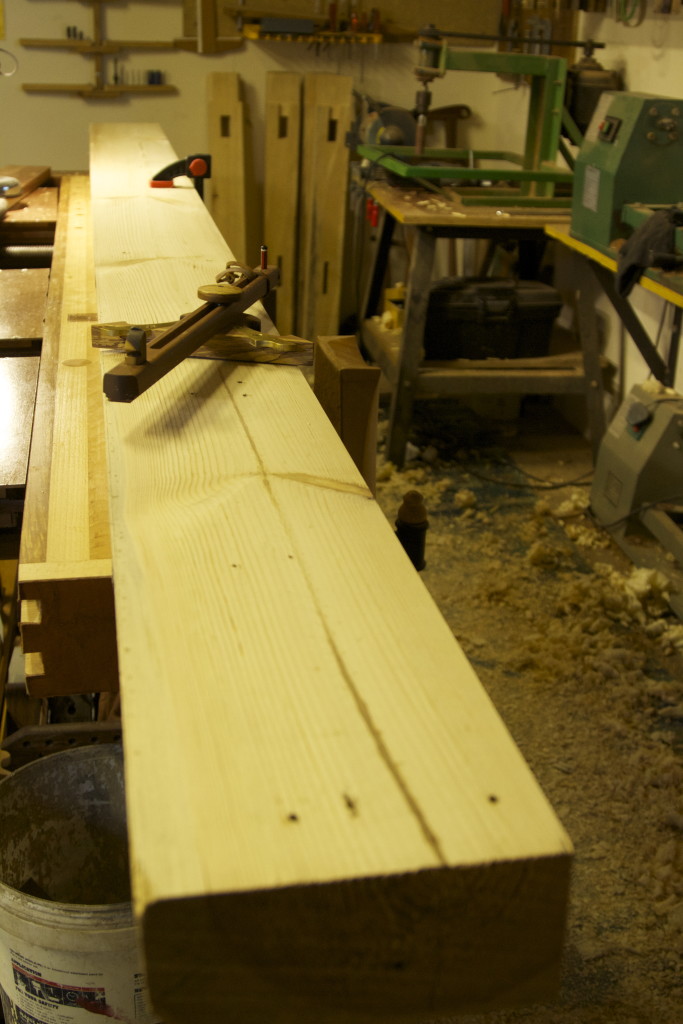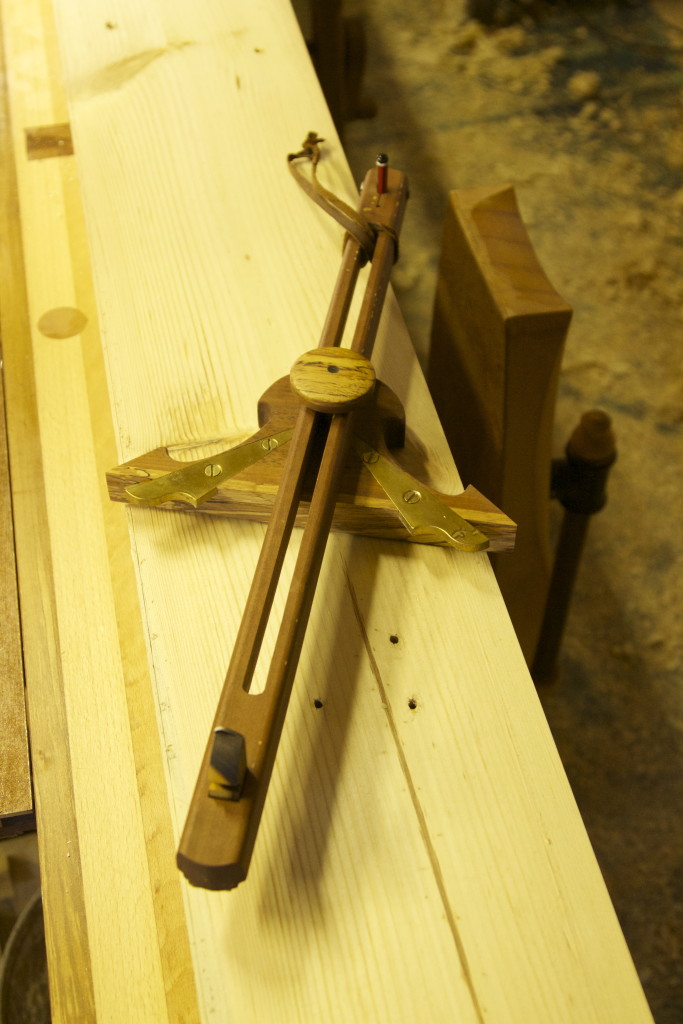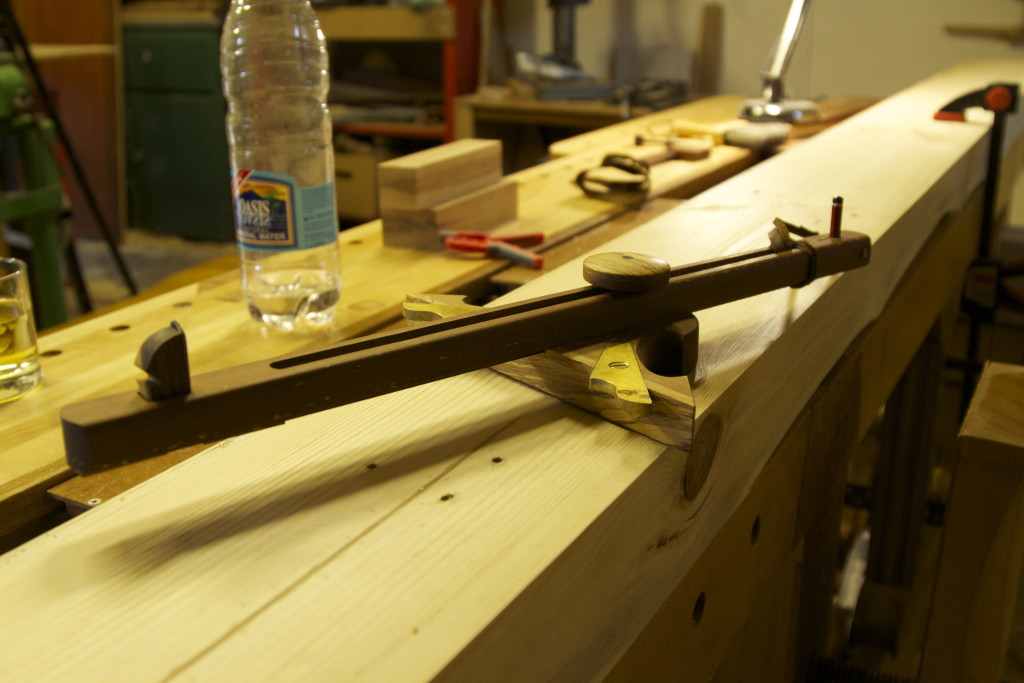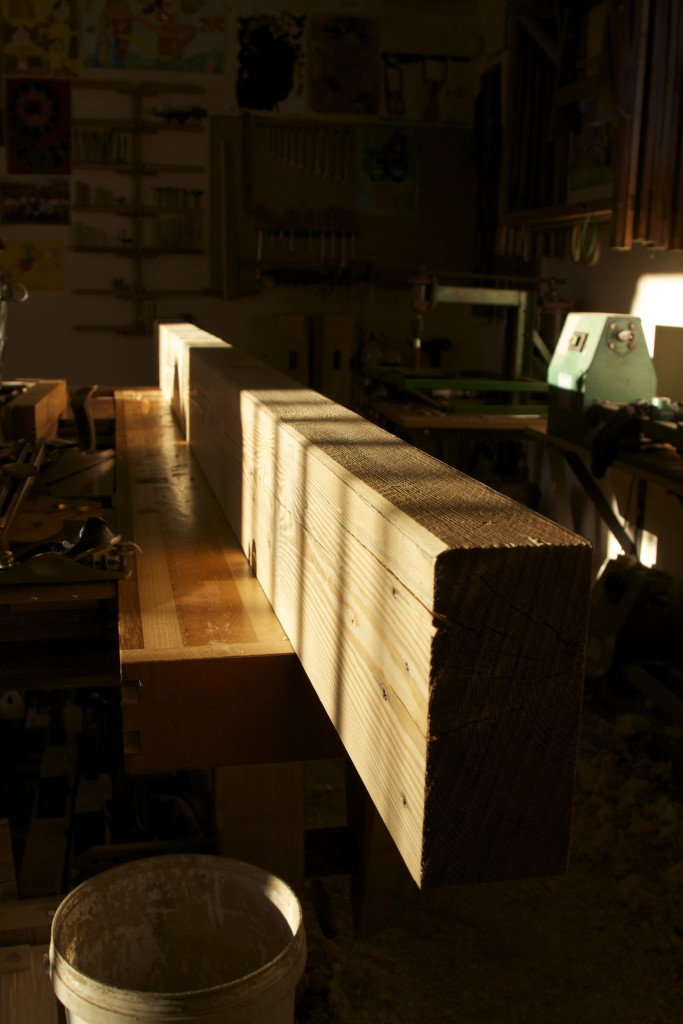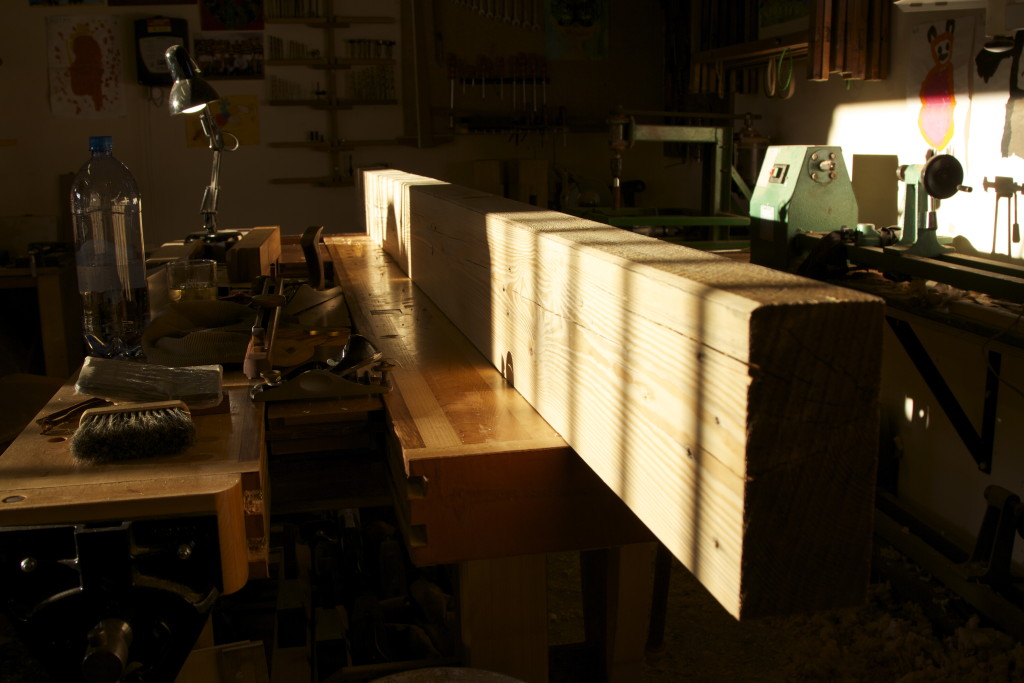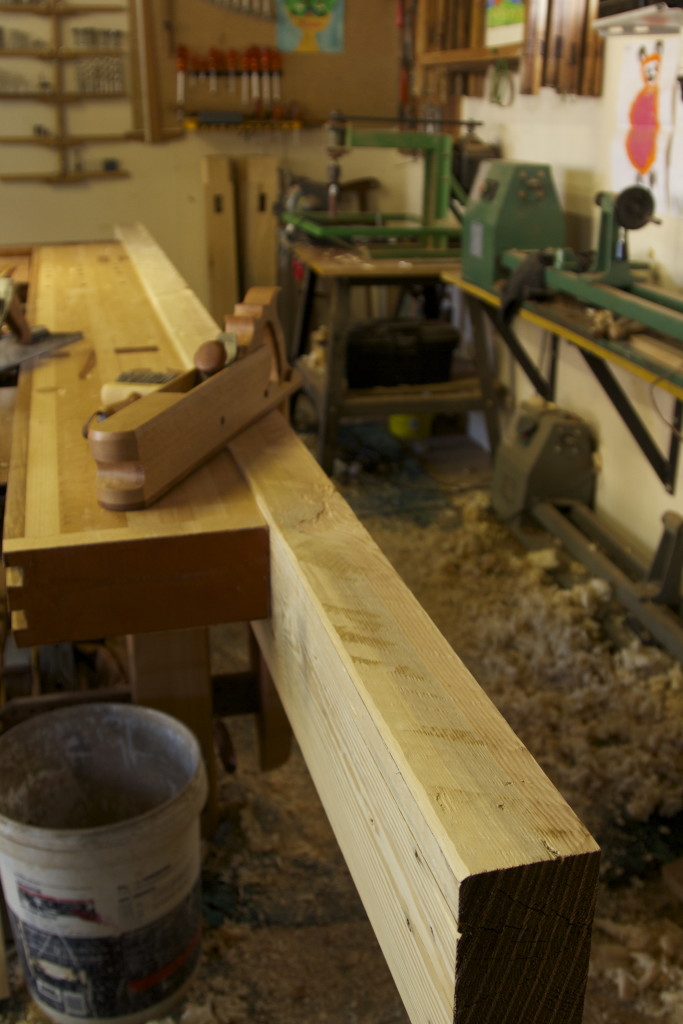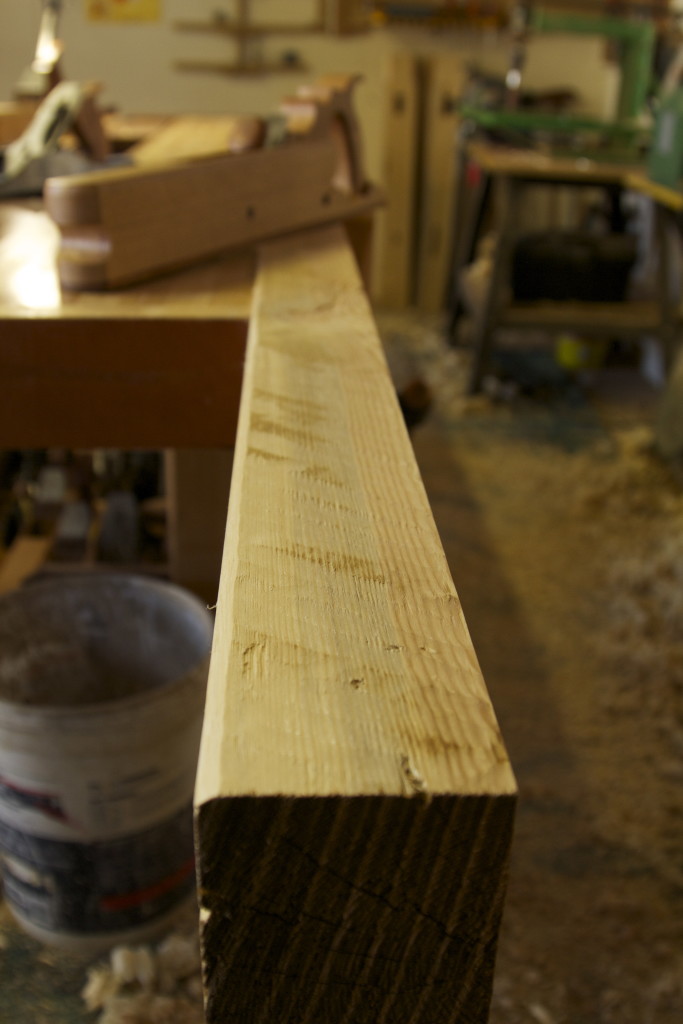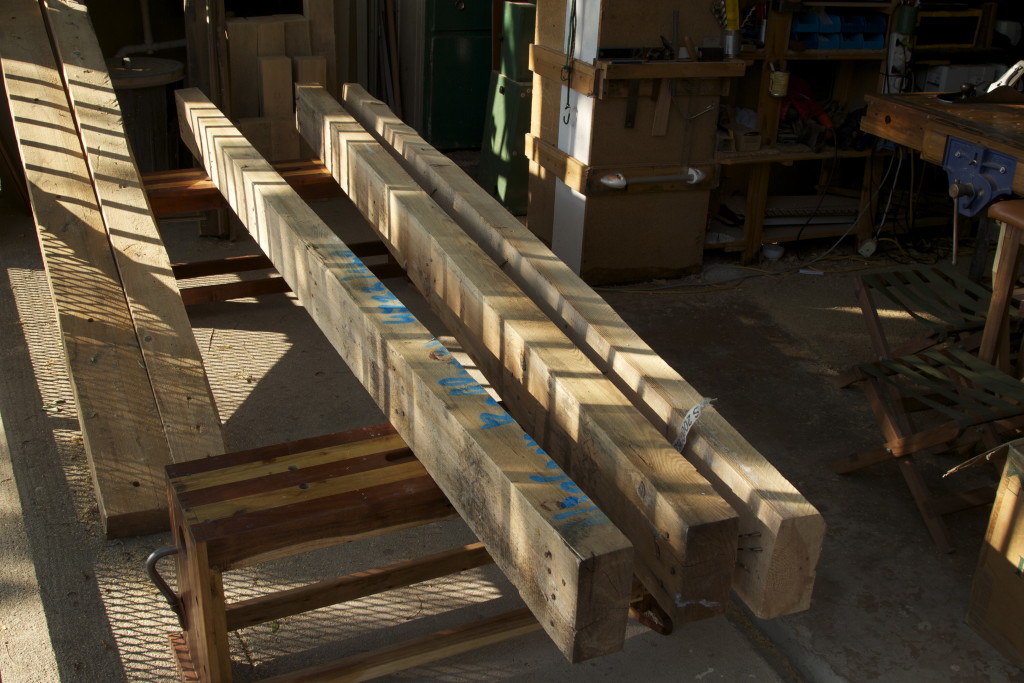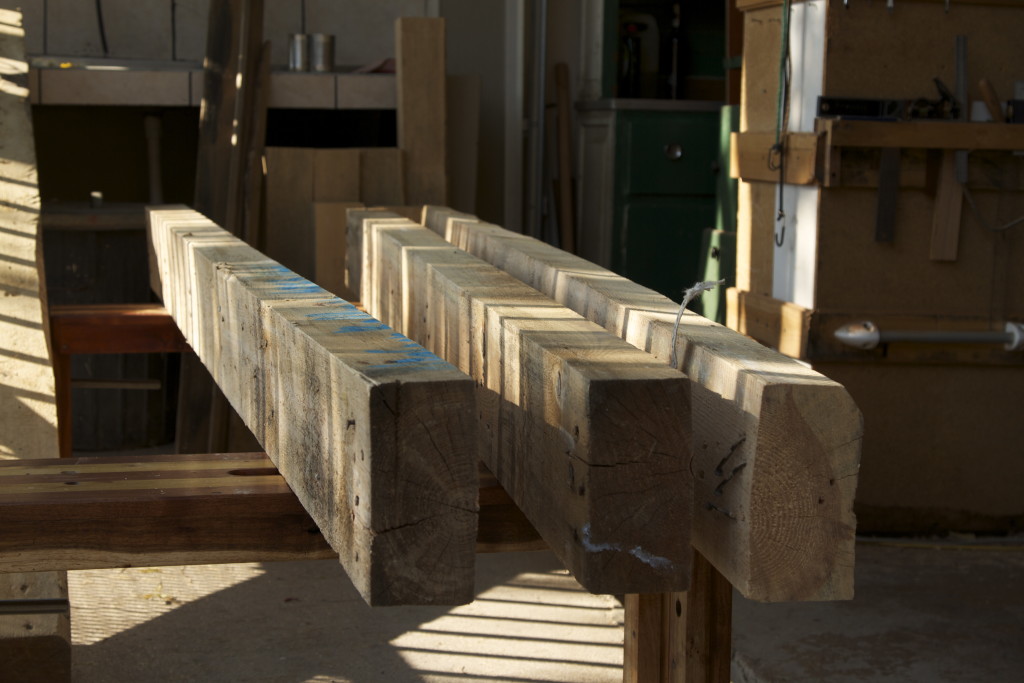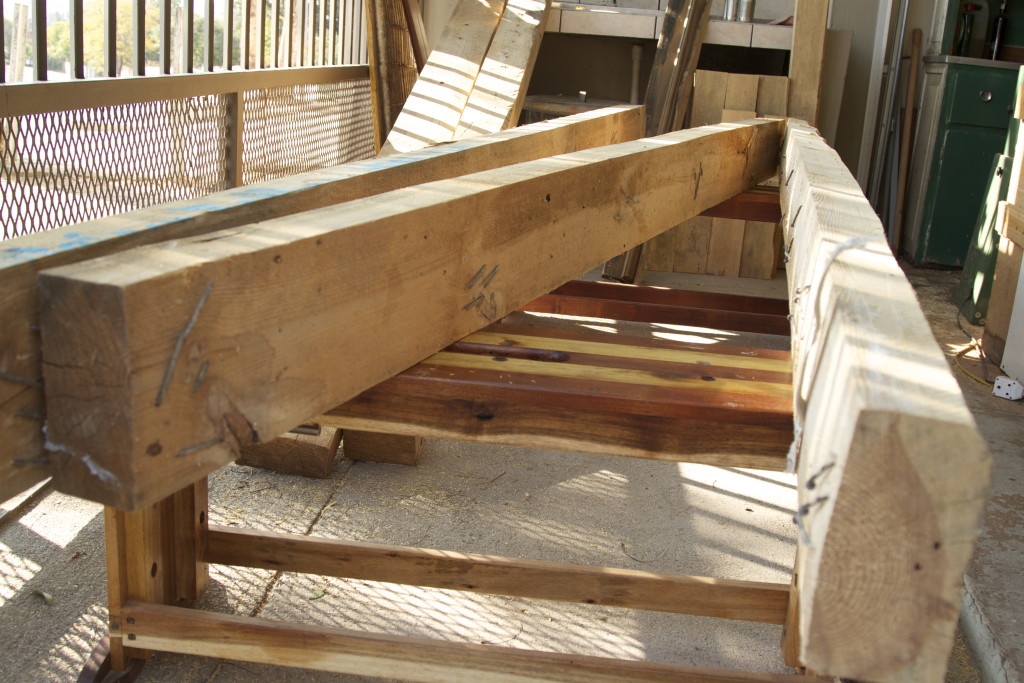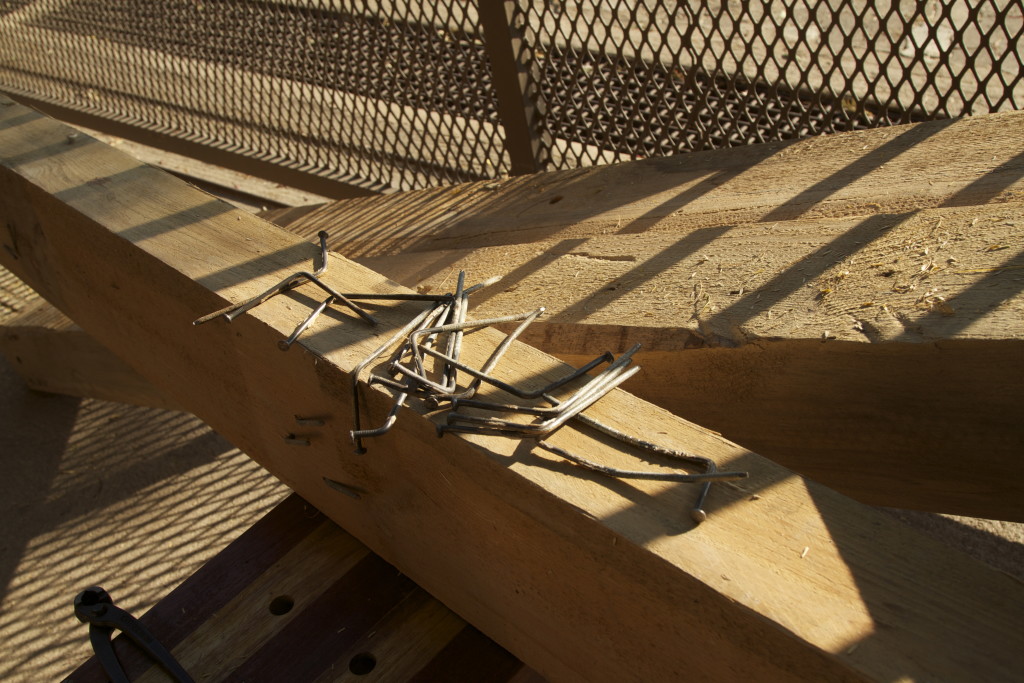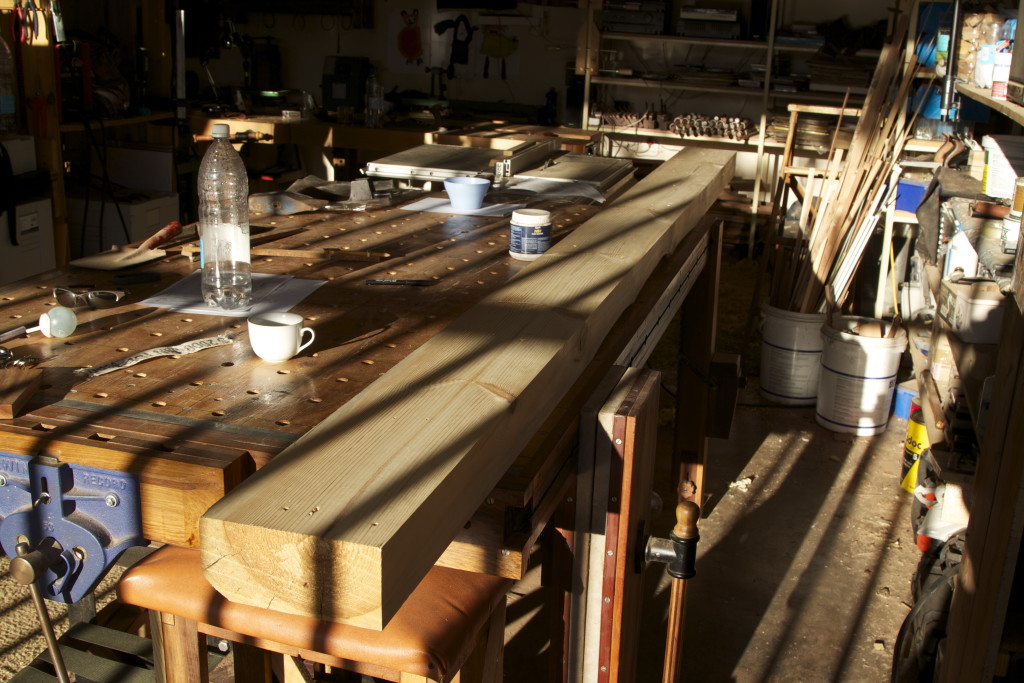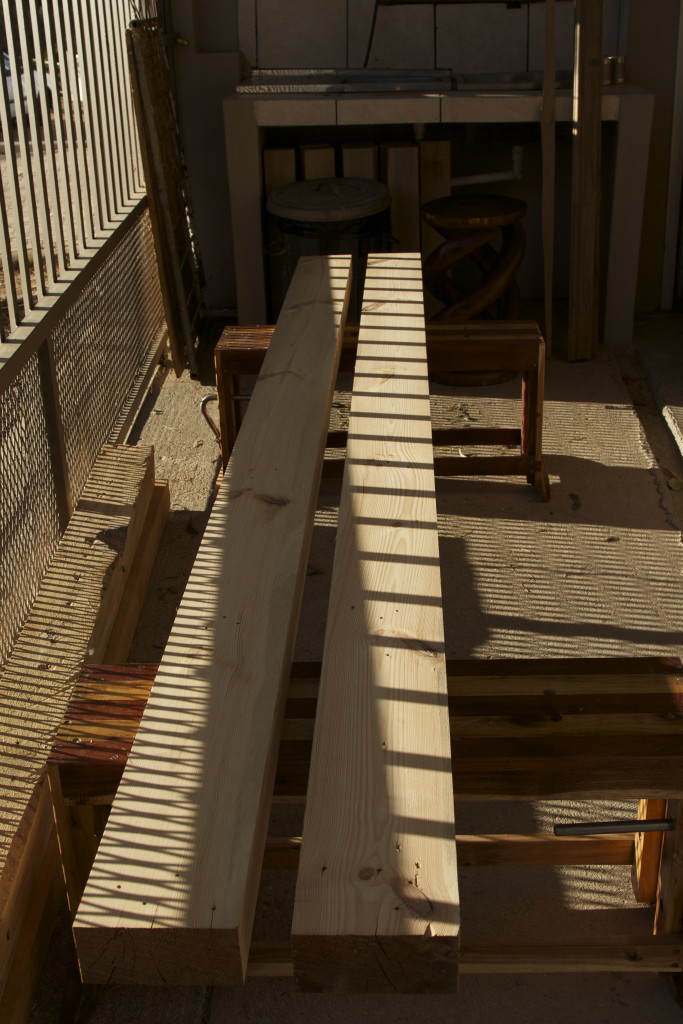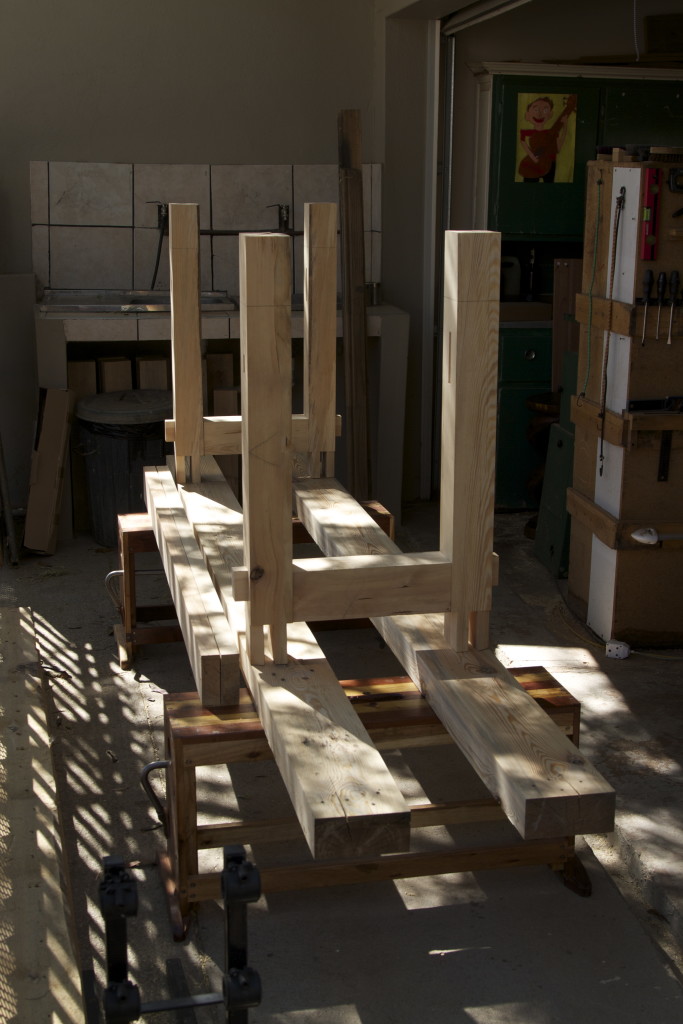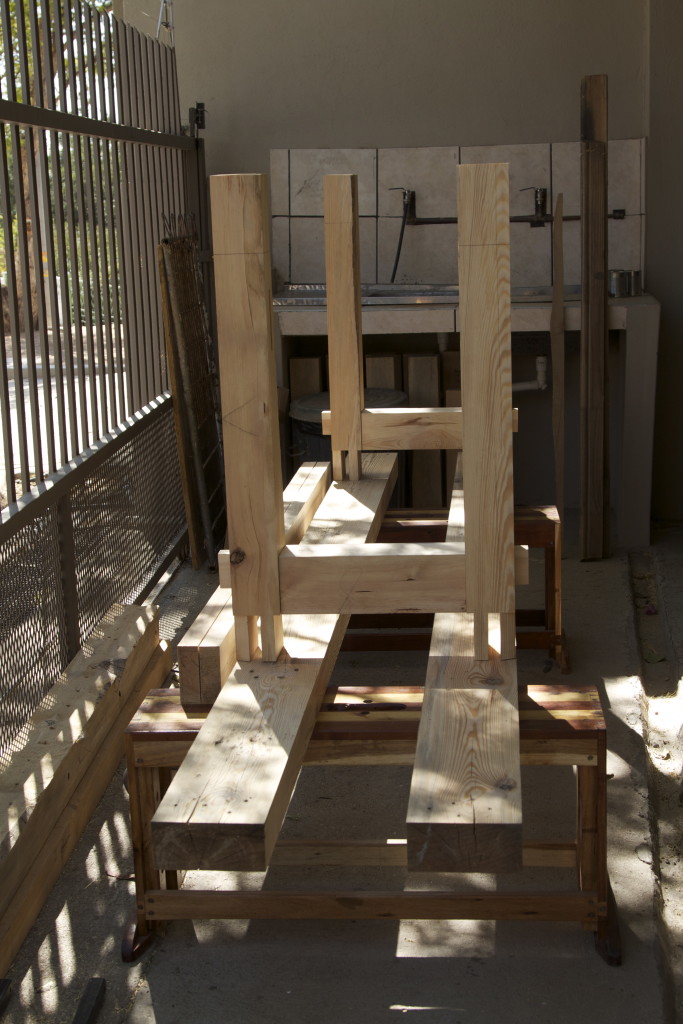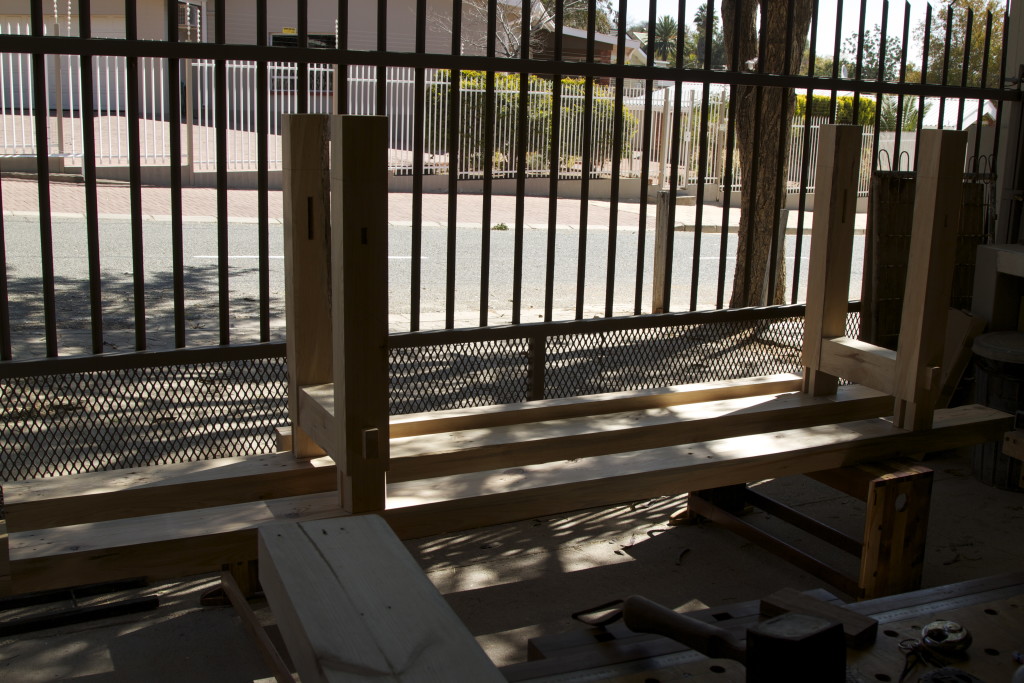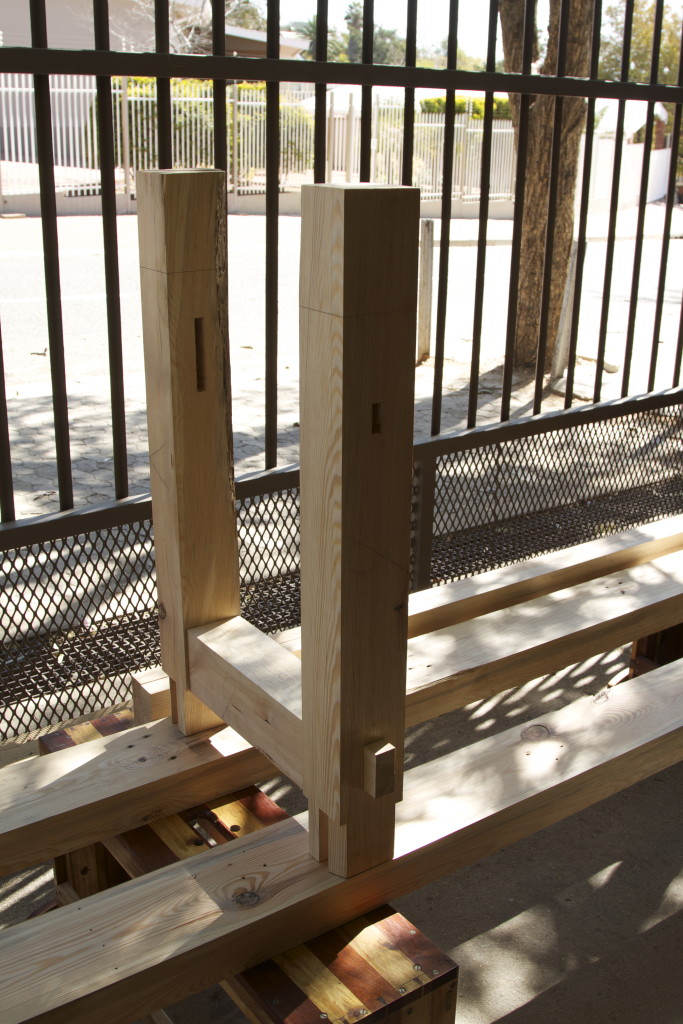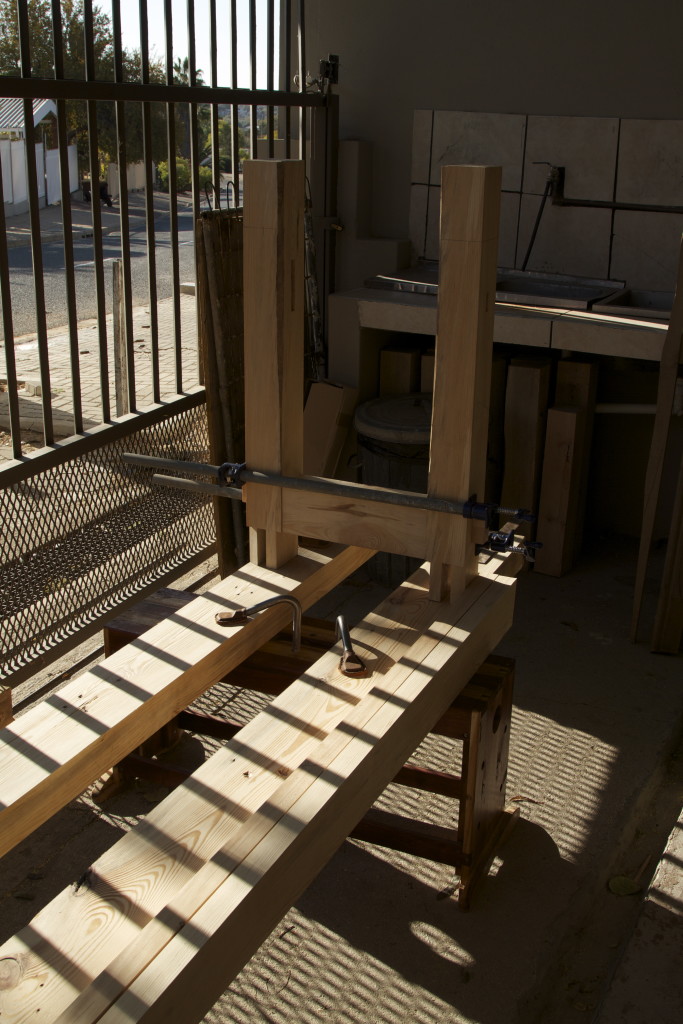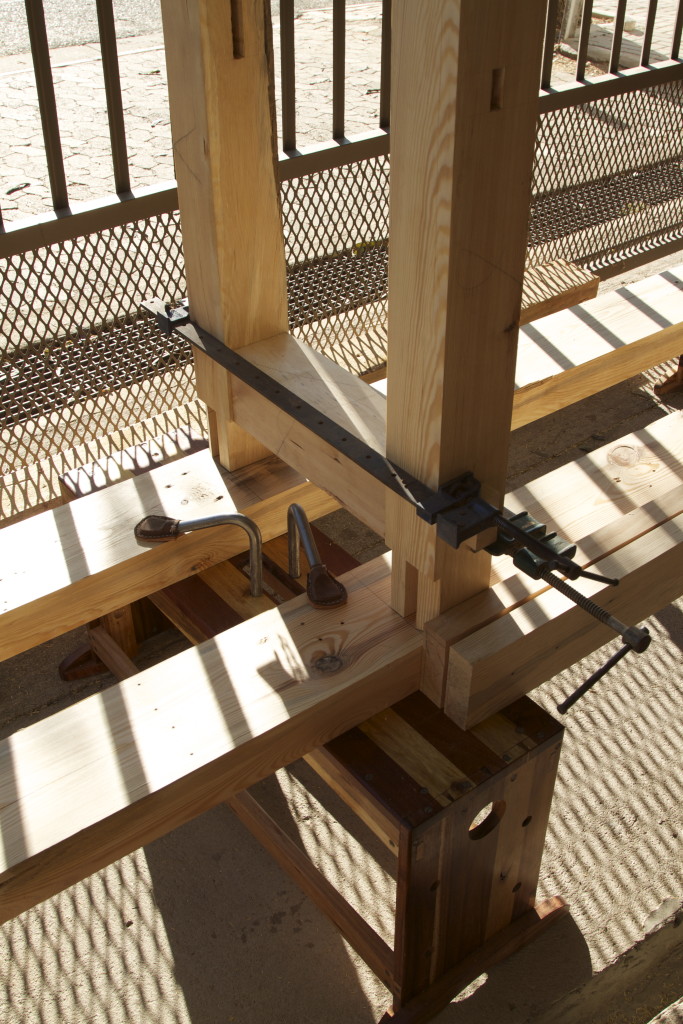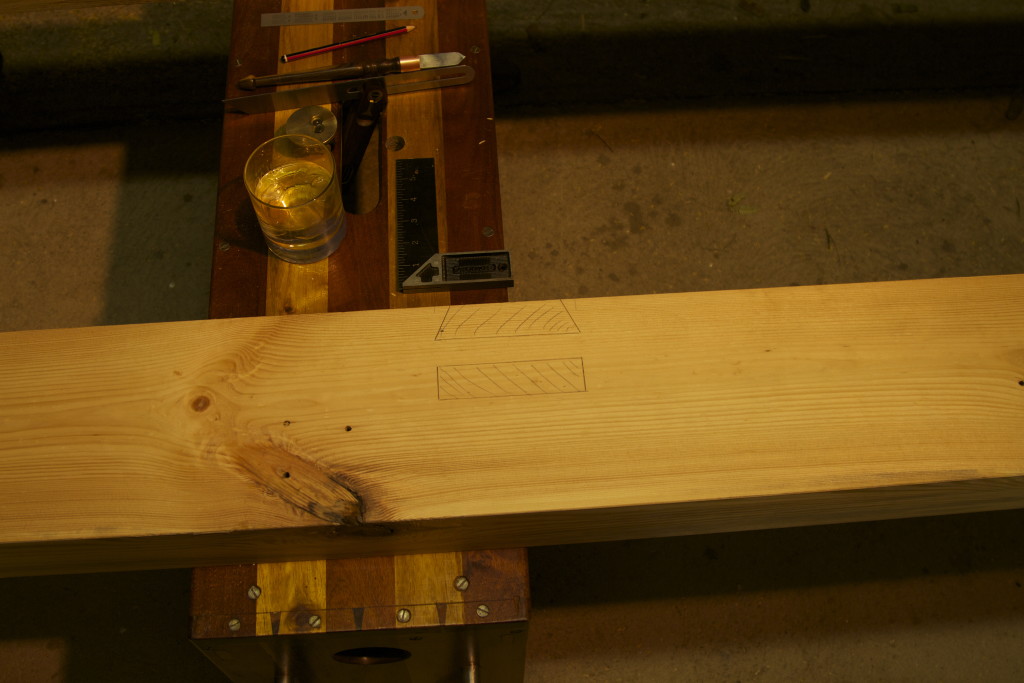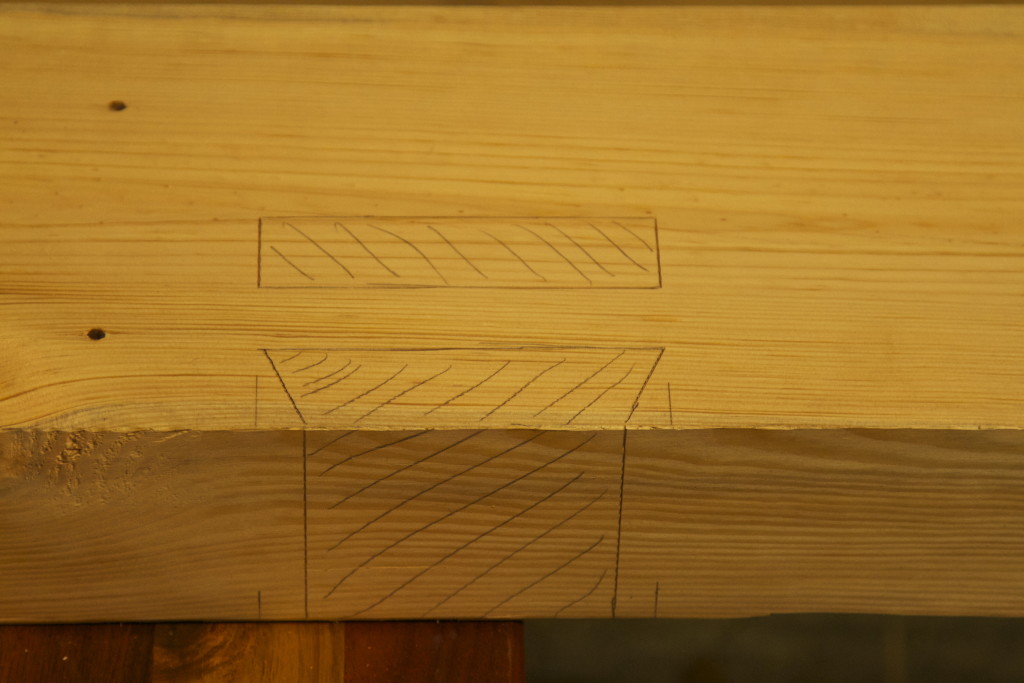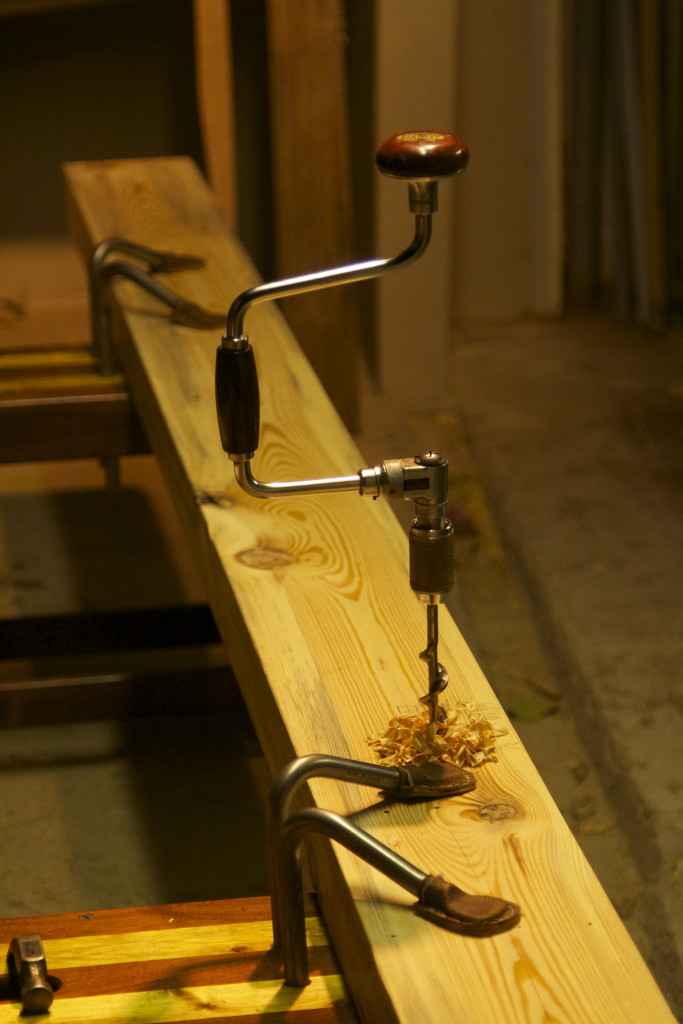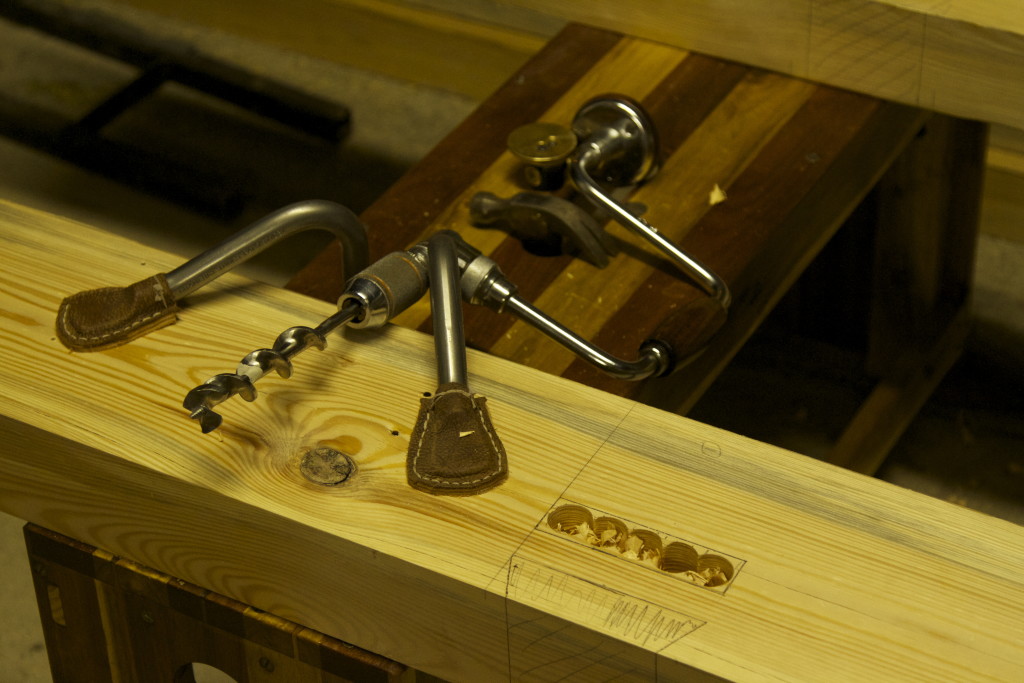24/8/2015
The time finally came to properly use my new Bad Axe tenon saw. As you can see in the pictures below, I used it to cut the massive tenons of the long stretchers. It was quite easy to cut with the aid of the saw horses that held the stretchers at a comfortable hight. The saw wasted no time on these cuts as it has a fairly aggressive tooth geometry.
The shoulders were done with a Lie-Nielsen crosscut backsaw. You can appreciate the surface of the tenons after the sawing (second and third picture below).
I added these two pictures to show a trick I discovered by accident. The row of dog holes along the front edge of my bench that operates in tandem with my quick-release end vise has two areas where a couple of holes are missing due to the placement of the leg. When I have a piece of timber that is of that particular length, it is a bit of a hassle to find a scrap piece of wood as a spacer in order to pinch the timber between dogs. The other day I realised by shear luck that my Veritas Wonderdog can solve this problem without much fuzz.
I then used a Stanley no. 10 rabbet plane to shave the tenons down to it’s exact size. You will notice how it also improved the surface of the cheeks (which is the important glue surfaces of the joint).
Here I am chopping the shoulders to the knife line.
I am not sure what this dimension of the tenon is called (?edge maybe?), but I trued it up with a pairing chisel and block plane.
Before reassembling the bench in order to mark out the correct location of the mortises of the long stretchers, I drilled the holes through the top that will accept a bolt to fasten it to the apron. The idea being that I could then use that hole to mark the exact location of the corresponding hole through the apron, while the bench is assembled.
Here you can see the bench assembled. The aprons are in their correct position, but the short stretchers sit at the top of the legs in order to line them up correctly without being in the way of the longstretchers.
I usually use these batons to located the exact position of the stretchers, as referenced off the apron’s through tenon.
The following two pictures might help to explain how the short stretcher’s tenon (traced off in pencil on the leg) will eventually pass through the long stretcher’s tenon to also become a through tenon that can be wedged. I got this idea from some Japanese joinery I saw some time ago and is one of very few subtle changes I have made to the design compared to my first bench.
With the holes for the bolts marked out on the aprons, I could drill them out after de-assembling the bench once again. I started with a 40 mm hole that will accept the massive nut. I used a Forstner bit (in the drill press) as it creates a flat bottom for a washer (plus I simply did not have a big enough bit for my brace). That was followed by a 1″ Irwin auger bit to allow for some wood movement as I will use a 20 mm threaded rod to produce my custom bolt.
I tried to copy (unsuccessfully) my friend Jonathan’s excellent photo of the in side of a rubbish bin. Check it out on his superb site by going here.
Marking out the mortises for the long stretchers.
Here I am drilling the set of dog holes along the front edge of the top and at the far end drilling out the waste from the mortises in the legs.


